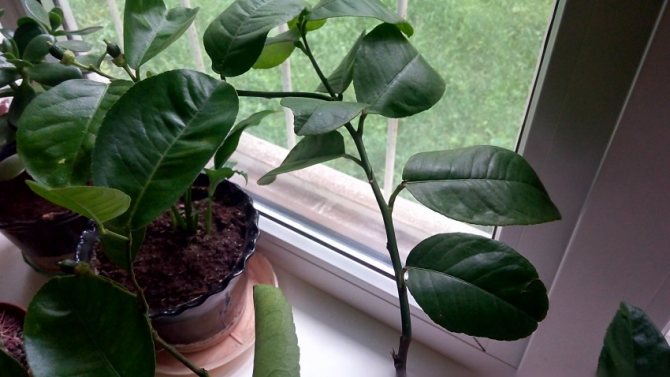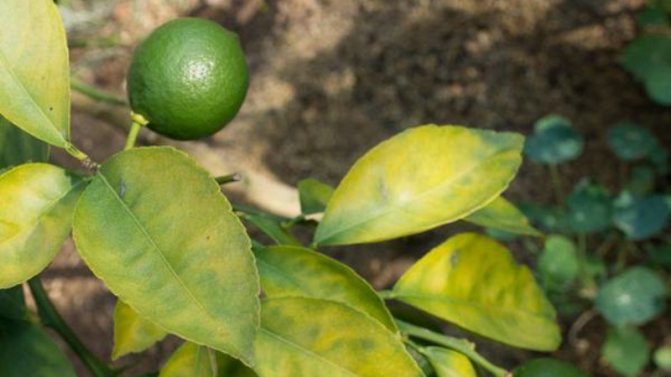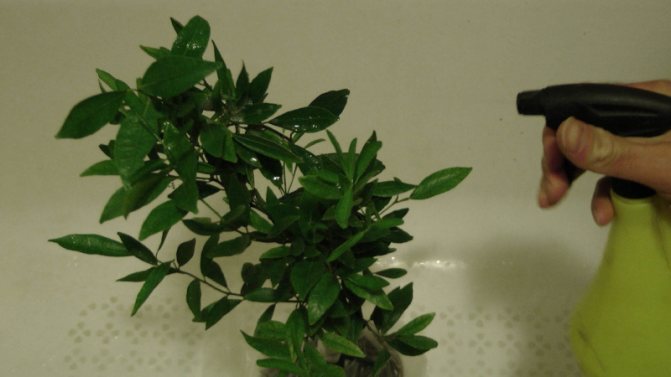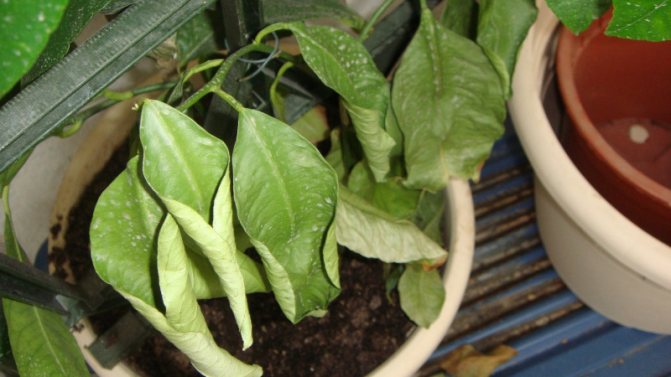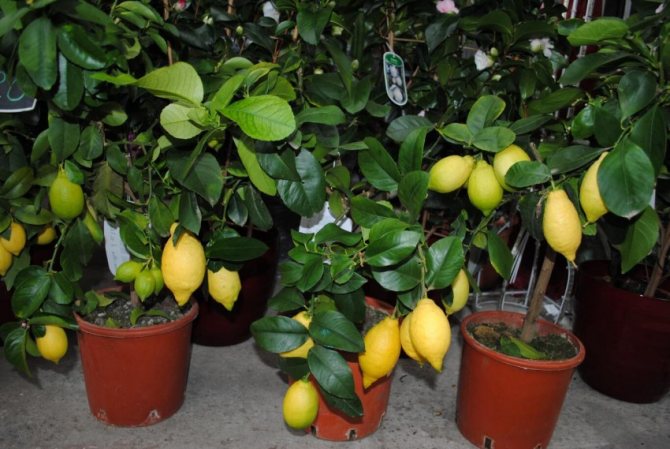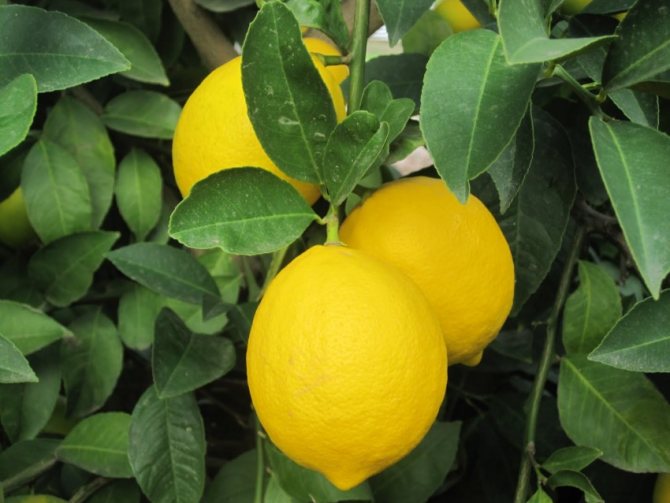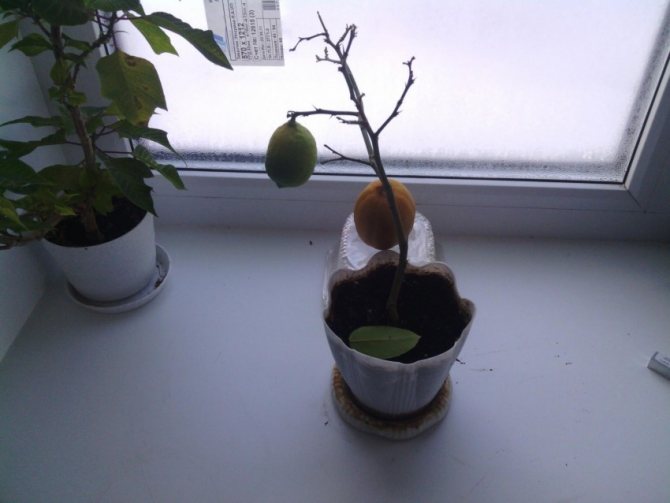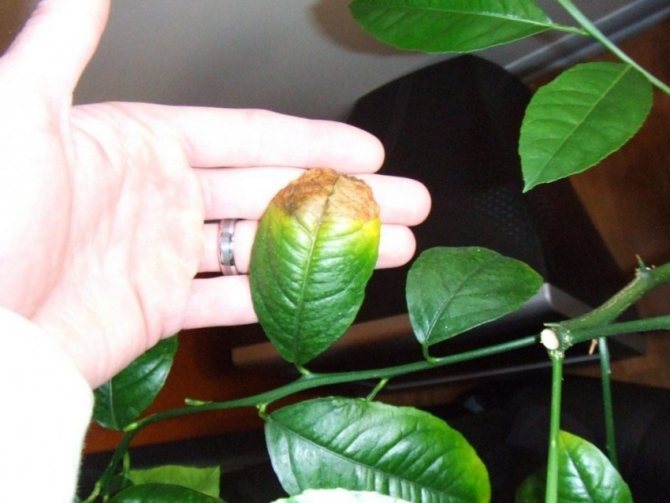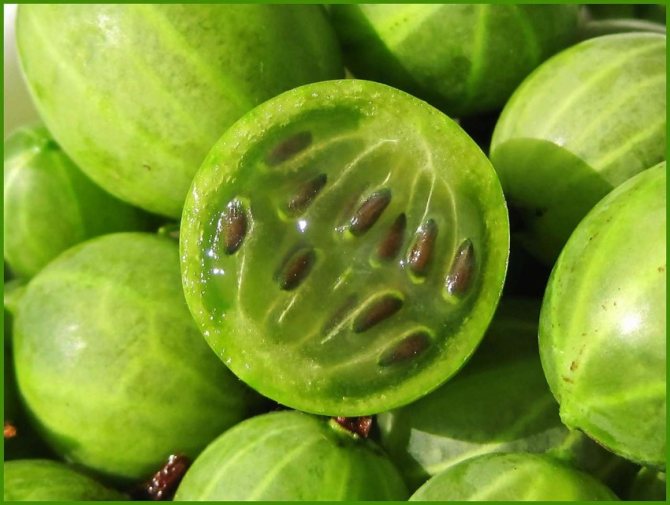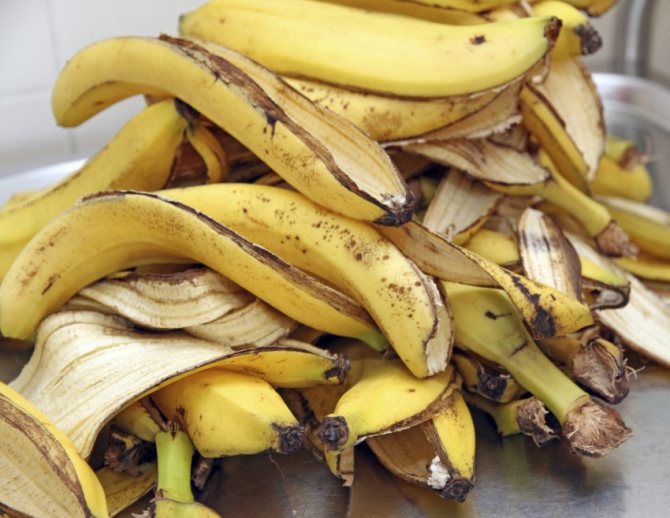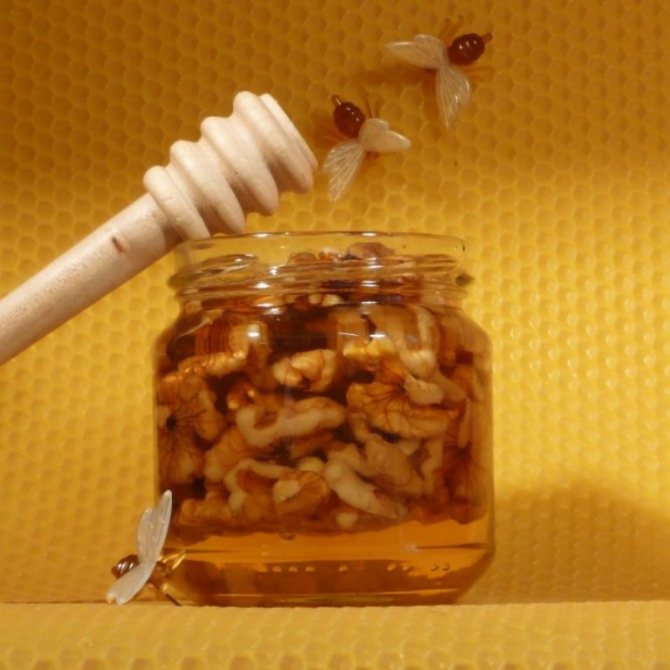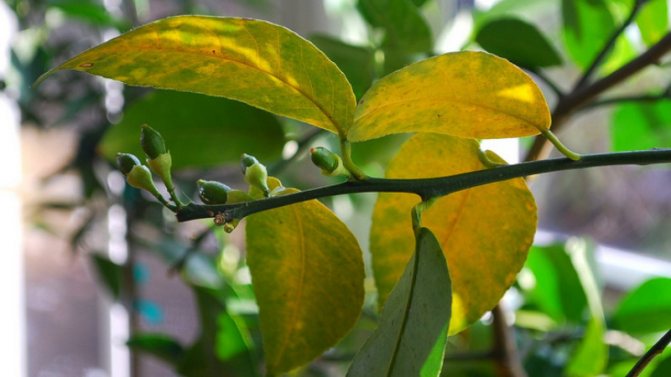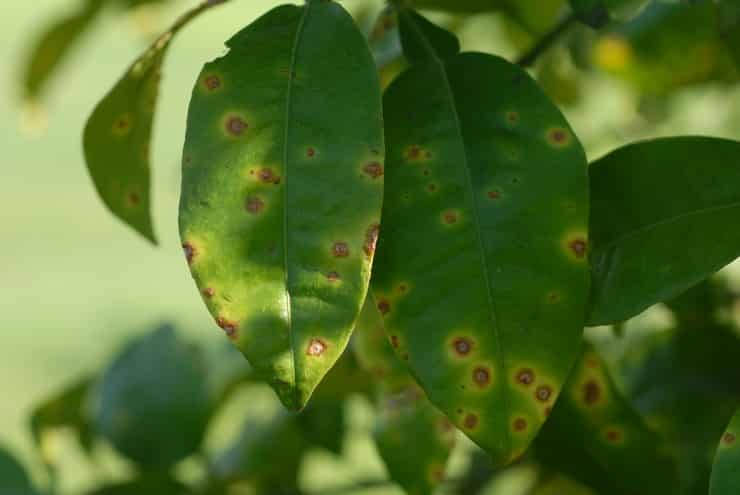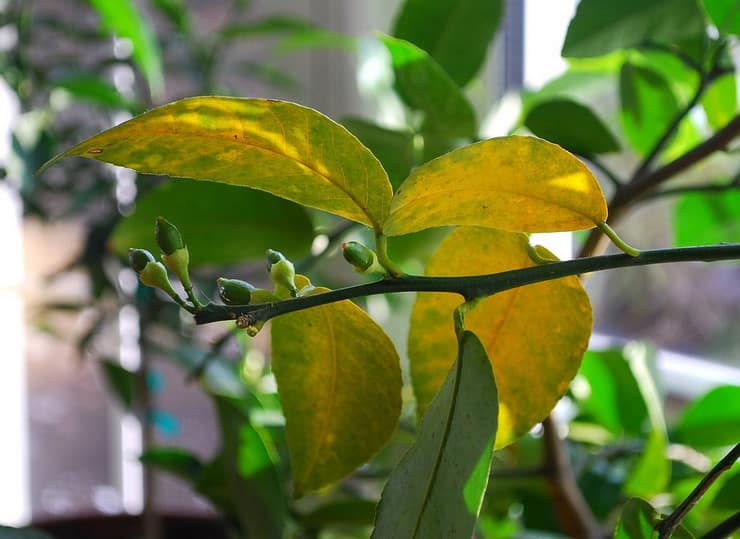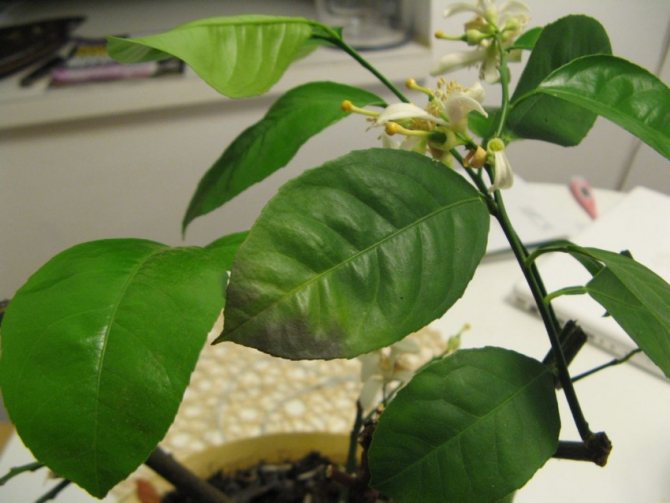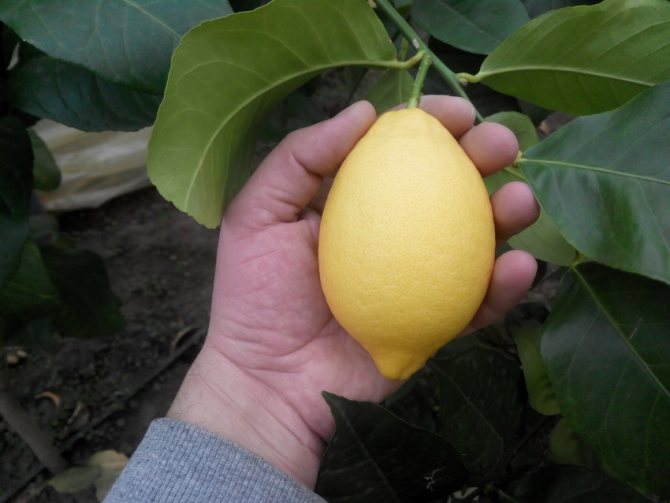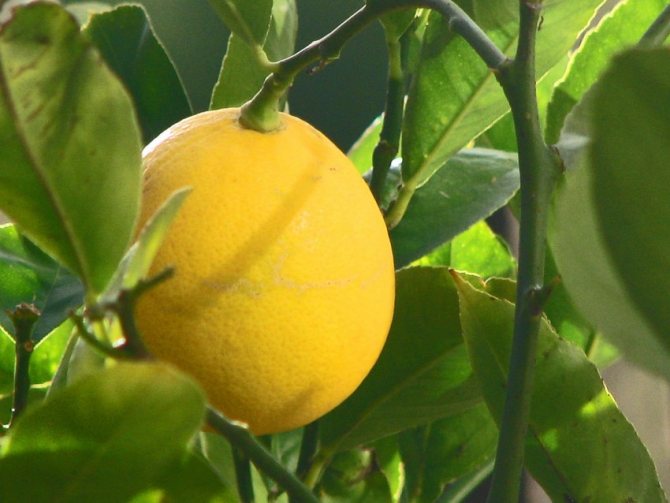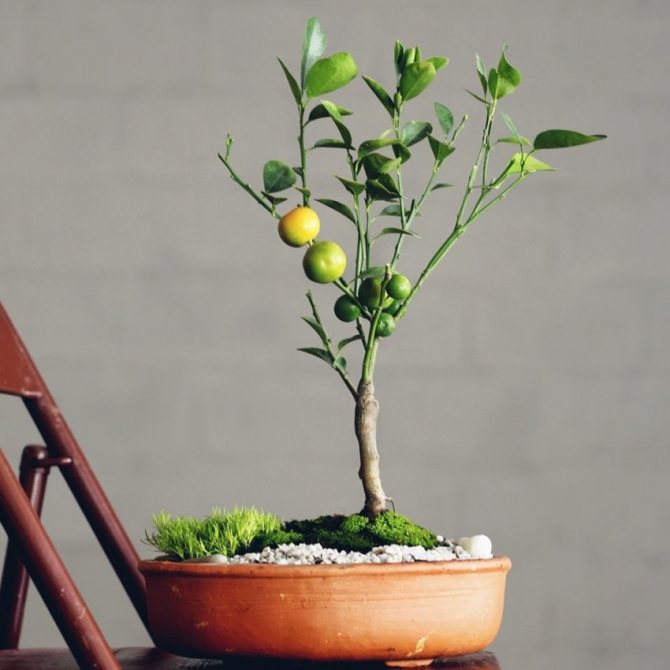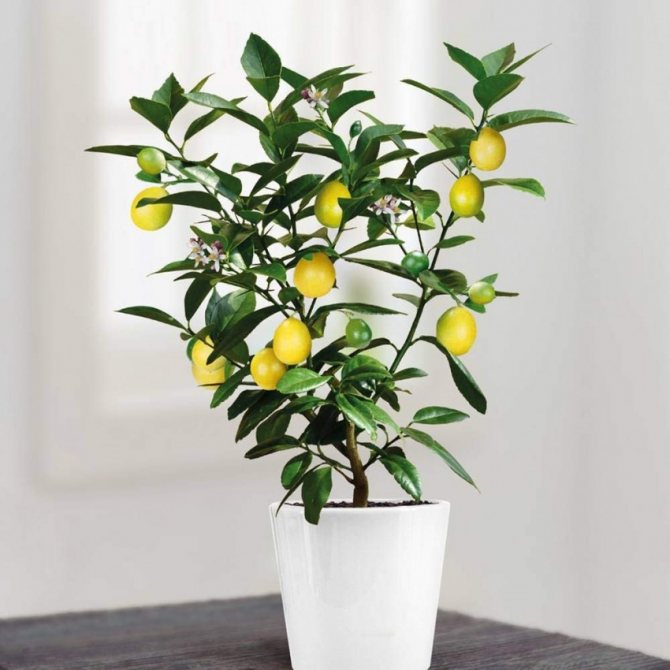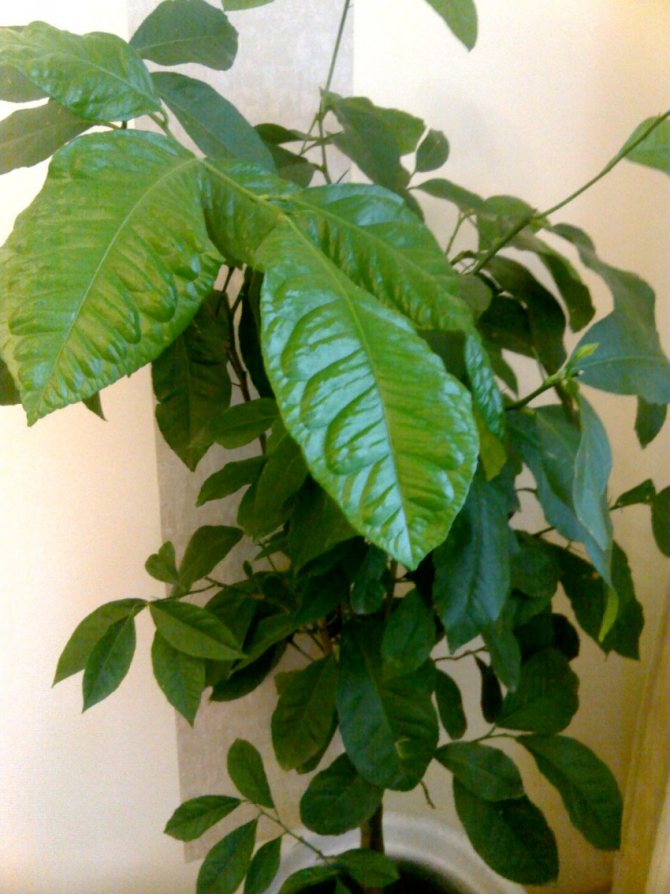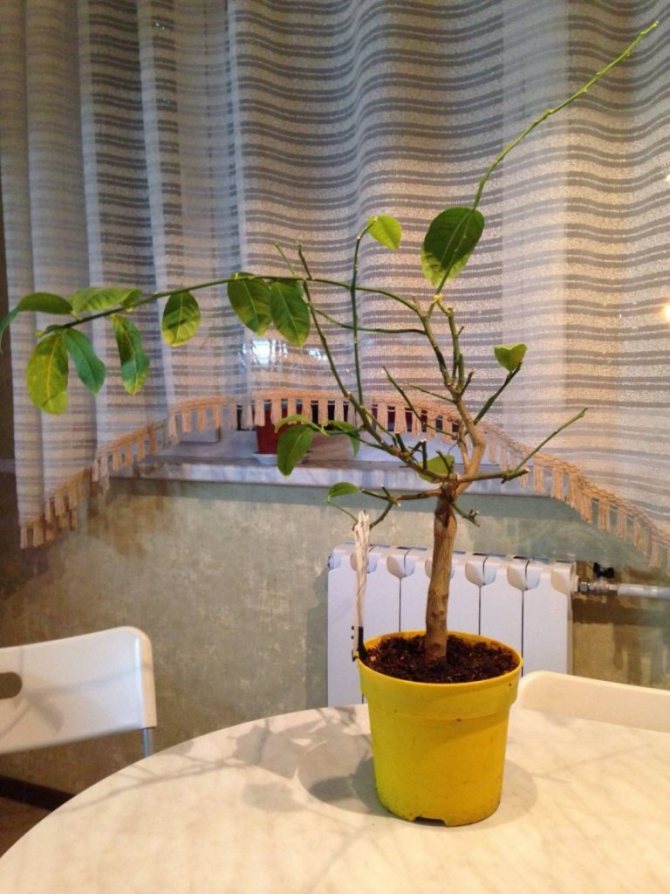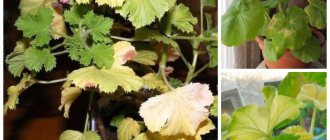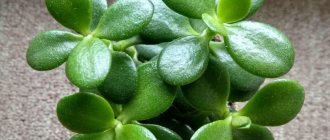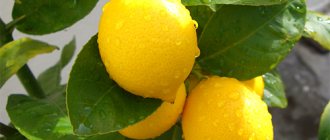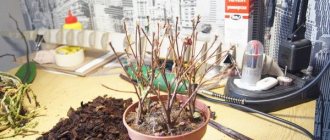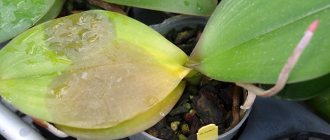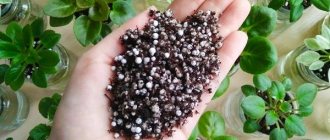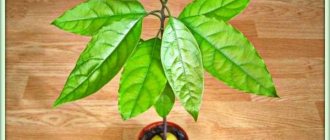
Indoor citrus cultivation requires responsibility on the part of the grower. If your caring for them is limited to just watering, then do not be surprised why the leaves of the lemon fall off, although it seems to be an evergreen plant. However, do not be afraid, caring for it is simple, but the tree will immediately respond to taking care of it with a beautiful appearance, flowering, and harvest.
Causes of lemon drying
Most of the reasons for the yellowing and drying of the leaves of the lemon tree lie in the errors in the care of the grown crop. When a small amount of leaves dry on a plant, do not worry: this is often a sign of seasonal rejuvenation of the deciduous mass of the plant, especially in mature trees.
If citrus sheds half of the deciduous mass or more, it is worth revising the features of the culture content at home.
Lemon leaves can dry out for the following reasons:
- poor lighting (citrus suffers from excess or lack of sunlight);
- insufficient watering or excess moisture in the soil;
- sudden changes in temperature;
- dry indoor air;
- lack or excess of nutrients contained in the soil.
Leaves fall off if the indoor tree has been infected with diseases or suffers from pests. The sooner the signs of damage and the factors preceding it are identified, the faster and more successful the treatment will be. It will not be possible to revive the plant only if the lemon is completely dry.
First symptoms and probable causes
As soon as the symptoms of diseases began to appear, measures are immediately taken to treat them. Delay in this case can lead to the fact that the lemon withers, and it will no longer be possible to save it.
Blackening of leaf tips
The edges of the leaves can turn black due to improper watering, dry air and planting a seedling in poor-quality soil. It is necessary to analyze the care of lemon, and if there are violations, immediately eliminate them. So that the ends do not turn black, they organize the correct watering. In winter, the room temperature should be at least 18 degrees. If the pot is on the window, you need to insulate it so that the lemon does not freeze from the cold window. Also, you can not put the pot in drafts.
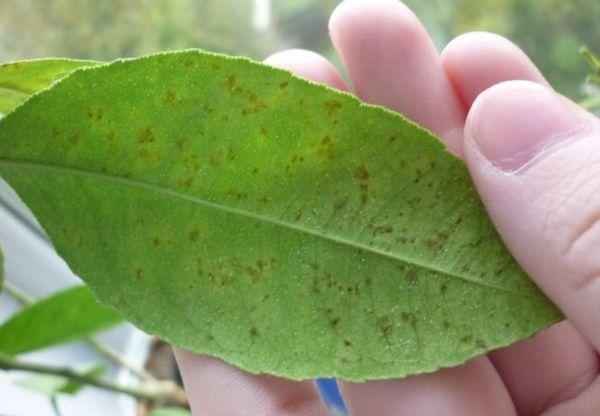

Spots appear on the leaves
On green leaves, yellow spots can appear due to improper care, insects or fungal diseases.
Types of stains:
- Yellow spots cover the entire leaf and do not have clear boundaries (improper care, lack of minerals in the soil).
- The leaf turned yellow quickly and lost its elasticity (plant hypothermia, in this case the pot is placed in a warm place and the lemon is poured with warm water).
- The edges turn yellow (lack of moisture, lemon needs to be sprayed more often).
- The appearance of small dots (the appearance of a spider mite or scabbard, trees are sprayed with insecticides).
If the spots are large, the edges of the rosary are clearly outlined, the cause of their occurrence is late blight. In this case, the lemon is transplanted into new soil intended for fruit trees. The roots are pre-soaked in fungicides.
The appearance of round spots on foliage and twigs indicates that the lemon is affected by cancer. It is impossible to cure this disease. The plant will have to be dug up and destroyed.
Leaves are deformed and curled
If the lemon dries up, the leaves become deformed and wither, the causes of these problems can be stagnant water, a sudden change of place with other conditions of detention, unsuitable soil for lemon, or excess nutrients in the soil.
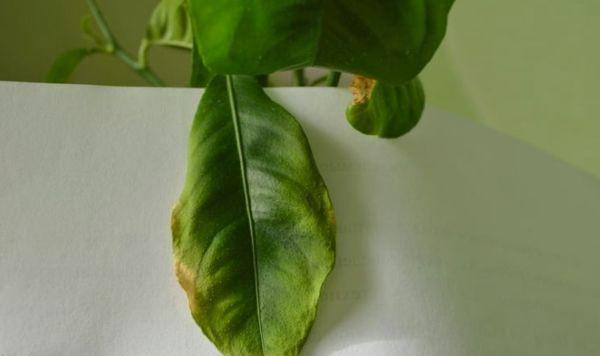

Local drying of the tree
Lemon dries locally due to improper care, pests or insects. Leaves dry out for the same reasons.
Shedding color, leaves and fruits
If the lemon has dropped the leaves, the reason may be poor lighting, improperly organized watering and temperature conditions, improperly selected soil.
The plant sheds fruits due to heat or pests. It may also be that the plant itself regulates the number of fruits. If there are too many of them, the lemon sheds excess ovaries.
How to save a lemon tree
There are more chances to save a home-grown crop with the timely detection of signs of drying out of the leaves. When the lemon is just starting to dry, it still resists the effects of harmful factors - it will turn out to revive it faster.
All measures for the improvement of indoor citrus are also preventive methods, because the treatment and prevention of damage to the leaf plates are performed by similar actions. The only exception is the infection of the plant with fungal and viral diseases, as well as the attack of pests.
It will be possible to cure citrus from diseases at home using copper-containing formulations.
It is impossible to fight Molsecco's disease. For such a pathology, effective means and methods of treatment do not yet exist.
Organization of correct lighting
Lemon is a tropical plant. He loves moisture and sunlight. The light should be diffused, characteristic of the dense thickets of the tropical jungle. Direct sunlight leaves burns on the leaf plates, which is why their surface begins to transform, becomes dry and rough.
To save a house tree, you will have to take several important measures. The citrus owner needs:
- Organize 12 hours of daylight hours. Supplementing is carried out with phytolamps.
- Install the container on the south, south-east or south-west windows.
- Protect the deciduous mass from direct sunlight with a cloth or special reflective foil overlays (they are attached to window panes).
All sun-damaged foliage will have to be removed. Dried leaves cannot be restored. It is easier to make room for the germination of young green mass.
Correction of errors in the organization of irrigation
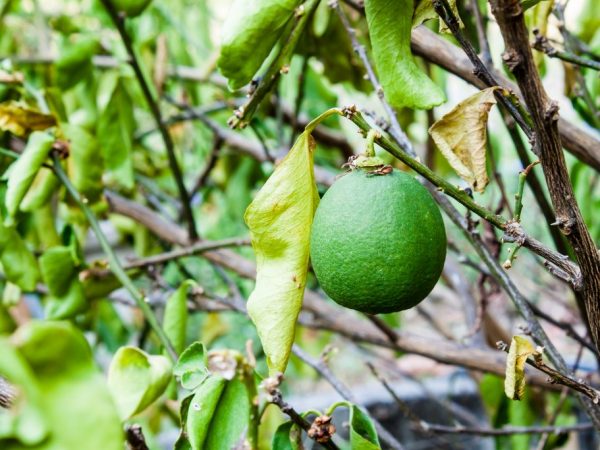

Overflow can lead to root rot
Lemons love moisture and react poorly to lack and excess. The plant is watered in small portions of warm water, avoiding the accumulation of excess liquid in the pan. They are guided by the state of the soil in the pot. Citrus is watered as soon as the earthy clod becomes dry.
With overflows, the roots of the culture suffer. They rot and gradually die off, depriving the tree of nutrients. As a result, the structure and color of the foliage changes, it dries and falls off. With such signs, they act decisively:
- extract the citrus from the pot;
- carefully remove the earthen lump and rinse the roots with running warm water;
- examine the root system for damaged tissues (all rotten processes are removed);
- treat the cuts with charcoal or other antiseptics.
After the performed manipulations, the citrus roots are dried for up to 30 minutes, and the lemon is planted in a new substrate with a good drainage system (up to 1/3 of the total volume of the pot).
Temperature normalization
With sudden cold snaps and frostbite, the lemon tree can quickly lose its leaves. Even an ordinary draft can have a detrimental effect on culture.
When exposed to critical temperatures, they stabilize the indoor microclimate. The favorable temperature for citrus content is 18-22 ° C.With careful care, the tree will grow quickly and grow into new healthy deciduous mass.
Air humidification
If citrus foliage begins to dry around the edge and curl, it suffers from dry air. The normal moisture content for the content of this culture is 60-70%. With any deviations, she is sick.
Freshening a flower in a pot will not be difficult. The following measures are beneficial:
- Spraying the foliage and tree trunk regularly with warm water, and rubbing the foliage daily.
- Covering heating devices with a thick cloth or foil: they contribute to dry air near adjacent windows.
- Installing vessels with water next to a tree.
Why lemon leaves fall and how to deal with it
Poor lighting includes a natural mechanism for reducing the amount of green mass, citrus fruits are susceptible to this, as conventionally deciduous plants. Only leaf fall for lemon is more a reaction to stress than an annual process. It is necessary to increase the illumination of lemons in the autumn-winter time, since where they come from, there is no such a sharp drop in illumination in winter.
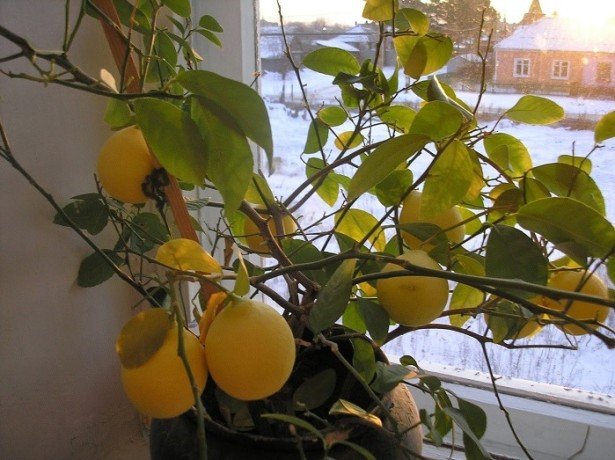

- Place the lemon tub by the south window
- Create extra lighting with reflective surfaces around the plant
- In addition, illuminate with fluorescent lamps.
Excessive watering leads to acidification of the soil, which makes it denser, less oxygenated. Little air enters the root system, small capillary roots begin to die off. Unable to provide food for all the green mass, the lemon gets rid of some of it.
Insufficient watering leads to the drying out of the earthen coma, the death of roots, and the non-assimilation of nutrients from the soil. Sap flow, as a consequence of this, slows down. And also the process of saving liquid in the lemon tree is turned on and it gets rid of most of the foliage. Drying out of an earthen coma is extremely harmful to the plant and can sometimes lead to its death, unless your lemon has already grown into a five to eight-year-old tree and the moisture supply in the wood allows it to endure these torments for more than a month.
Sudden watering after a long period of drought is also harmful. This is akin to monsoon rain, when the soil changes abruptly from excessive dryness to excessive moisture. Lemon does not like this extremely and responds to such stress adequately - it sheds its leaves.
Read also: Spring pruning video for beginners
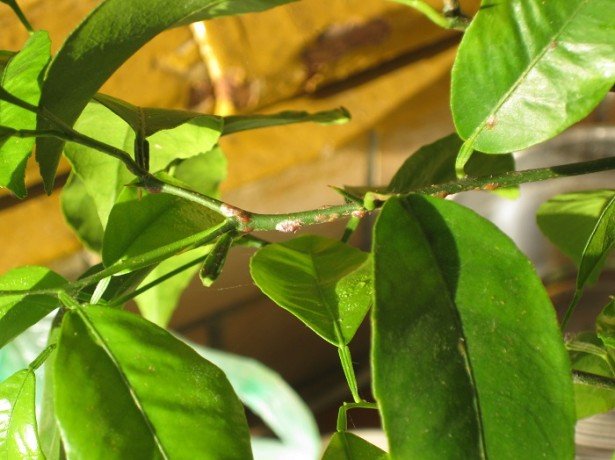

To avoid yellowing and leaf fall in such cases, it is best not to dry the soil or flood the pot with water, turning it into a swamp. The soil should always be slightly damp. But if the earthen lump has dried up, you need to gradually moisten it. First, in small portions of watering at intervals of several hours, and then after a day or two, increase the doses of watering until the entire volume of the soil is saturated with moisture.
Soil depletion. During the summer growing season, the plant intensively consumes the mineral composition from the soil, and given that in the limited space of the pot it has nowhere to replenish besides the artificial introduction of organic and mineral dressings, we should take care of this. Among the dressings, there are three main ones: nitrogen, phosphates or superphosphates, potassium salts. But indoor flowers even more need trace elements such as zinc, cobalt, molybdenum, selenium, iron, etc. A significant drawback of one or more of them is expressed in sheet deformation, color change, and then falling off. This can be redness, the appearance of yellow spots, blanching, loss of leaf elasticity, drying out along the edges.
We avoid this problem by feeding the soil with organic matter with minerals. Macronutrients are not given evenly throughout the year. So, in the spring, most of the nitrogen fertilization and organic fertilizers are introduced into the soil.In summer, nitrogen, mineral and organic phosphorus are uniformly introduced. In autumn, we increase the dose of potash fertilizers, exclude nitrogen and organic matter. We feed with microelements monthly. This is best done in the form of liquid compound fertilizers.
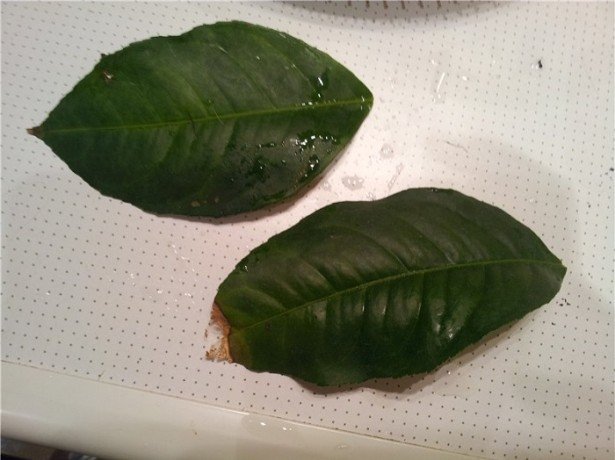

In the photo, fallen lemon leaves
Heat. The dry warm air of a room heated in winter resembles the microclimate of a salt desert. Even in the Sahara the humidity is higher. Even for cacti that love dry but cool winter air, these conditions will not be comfortable enough. It is not surprising that the lemon cannot cope with such stressful conditions - the leaves fall.
What to do if the air in the apartment is too dry:
- First, move the treepot away from the battery.
- Hang the radiator with a thick blanket or rag if it is not possible to regulate the room temperature in another way.
- Spray regularly every week. Give the plant a shower periodically.
Low room temperature. Lemon needs coolness for a successful winter, but it's worth knowing when to stop. It is better to keep the temperature in the room where the lemon tree is located above +10. Otherwise, the plant also includes a leaf fall mechanism. The problem is relevant not only for winter gardens, greenhouses, where air temperatures may be too low. Your citrus fruits should also be kept out of drafts, so as not to be surprised later why the lemon sheds its leaves, despite all the measures taken. In winter, constant drafts lead to the fact that the plant endures extreme temperature fluctuations for a long time and experiences stress. We need to rid him of this. So take care of the temperature regime, as well as the absence of drafts at home.
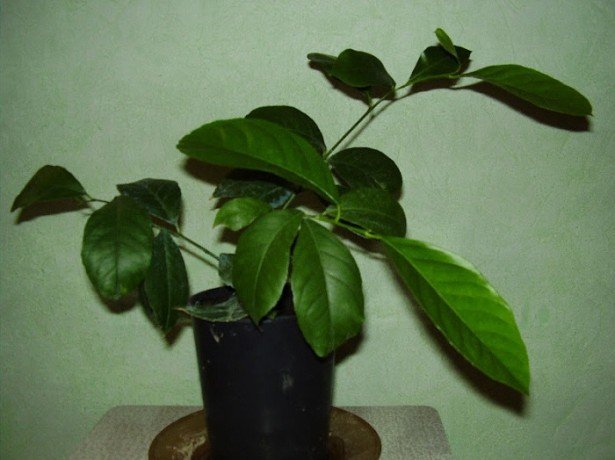

Leaves in the photo are falling
And it is worth mentioning separately about diseases and pests of citrus fruits, which can also lead to leaf fall.
Why is it dropping leaves? What to do?
Let's try to figure out why the lemon tree sheds its leaves and what to do in this case.
Lemons come from places where they can get enough sunlight even in winter. On the lack of lighting indoor lemon responds by shedding green leaves. The plant is depleted and unable to provide food for all the foliage, and gets rid of the excess.
We talked about the rules for caring for indoor lemon in the winter in a separate article.
General recommendations
If diseases begin to develop, as a result of which the leaves fall and the appearance of the citrus also leaves much to be desired, then restore lemon possible while maintaining high humidity. Under these conditions, the leaves do not evaporate water, and they also cannot fall off. It is worth putting the trees in greenhouses upholstered with transparent material. For small specimens, you can make resuscitation sites yourself using an old aquarium or a plastic bottle. If the trees are large, then you can cover them with plastic material. If the tree takes on a healthier appearance after a while and new shoots begin to grow, then the polyethylene should be left in place. After a while, it is worth first removing the material for an hour or two, and then the airing period gradually increases.
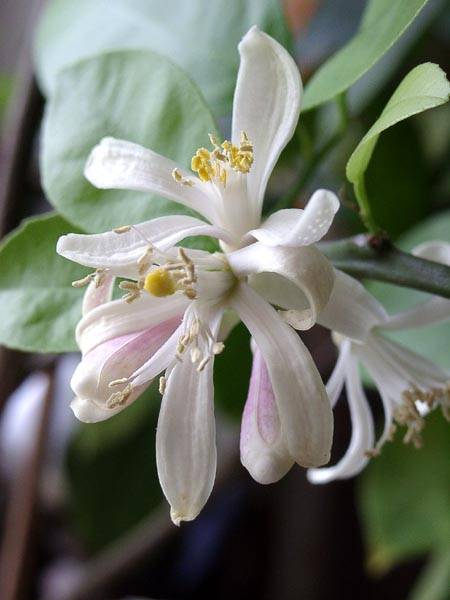

When the lemon is in bloom, the room is filled with a subtle, sweet scent.
Transfer
Usually the sale of purchased plants takes place in small pots. Soon you may find that the roots do not fit in the containers and climb through the holes made in the bottom. Therefore, the owners decide to transplant the plants into another container with a larger volume. But such a transplant is very stressful for the tree, so it is worth carrying out the procedure after its acclimatization, which takes place within 2-3 weeks. In addition, for better survival, it is necessary to maintain an earthen lump during transplantation.
Fertilization
Indoor lemon care involves the application of fertilizers. But you cannot fertilize diseased trees, as well as those that have been transplanted. In such plants, poor work of the root system is observed due to poor absorption of fertilizers. You should not apply any fertilizers within six months after transplanting. But in rare cases, it is necessary to use foliar dressings.
Accommodation
Citrus fruits grow well and bear fruit abundantly in conditions of high light, heat and humidity, therefore, trees are usually placed on the southeast or southwest side of a house or apartment. But the plant is absolutely not adapted to grow in hot conditions, therefore, after purchase, it is placed in places with a large shade.
The optimum temperature should be closely monitored. If the roots are in a draft, and the crown is in warm and dry conditions, then this is also unfavorable for the tree.
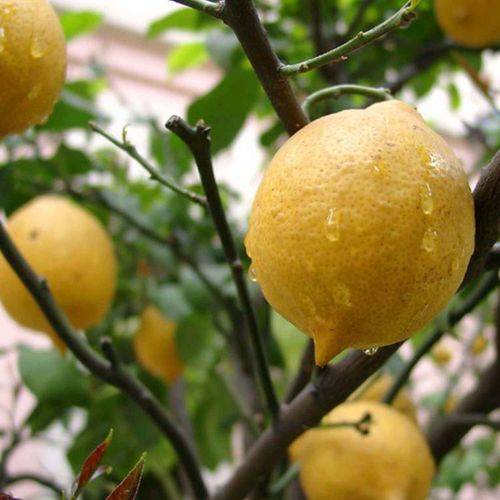

Following the care recommendations, after a while and from your citrus plant, you can get fruits
Resuscitation measures
Homemade lemon resuscitation is carried out after determining the reasons that led to this.
First, you should carefully examine the root system. Usually the tree is pulled out of the pot and examined. If the roots are normal, then the plant is carefully placed back. If rot is found, it is worth eliminating it. The usual slight twitching can help in determining the condition of the roots. If the plant is creeping, then this indicates decay. When determining the complete decay of the roots, the tree is placed in water, in which special preparations are dissolved, for an hour and a half. Then the citrus is transplanted into a pot with light soil.
If not all the roots have rotted, then the rest is washed and planted in the ground. But frequent watering is not needed in this case.
Pests are often one of the main causes of the detrimental state of citrus. They suck the sap from the plant, preventing it from getting all the nutrients it needs. Citrus can usually be attacked by red spider mites, scale insects, or mealybugs. Indoor lemon care consists in the timely detection and elimination of these pests with the help of special preparations.
If you follow all the measures when caring for citrus fruits, then soon the plant will again delight you with its beautiful appearance and excellent fruits.
pavlovskiylimon.rf
Favorite the lemon suddenly dropped its leaves... It's a shame, and it is urgent to eliminate the cause of the pet's ill health. There may be several reasons.
Insufficient lighting
In autumn and winter, insufficient lighting is especially destructive in combination with a high temperature on the windowsill (over 15-18 degrees).
The lemon should stand very close to the glass in winter. It is advisable to carry out additional lighting so that the duration of daylight hours is 12 hours. It is better to use fluorescent lamps, because they are distinguished by a cold glow and do not cause overheating of the leaves. These lamps are placed directly above the plants or to the side, but very close.
You can lower the air temperature on the windowsill to the required one (10-12 degrees) by periodically opening the vents for a few minutes. It is necessary that the window opens like a transom, then the frosty air does not go down to the plant, but goes up without harming it. At the same time, drafts should not be allowed.
Dry air in the room
For this reason, citrus roots do not have time to make up for the rapid evaporation of water from the leaves. The air is excessively dry. Especially during the heating season. Ideally, it would be to double the window sill and cover it on top with a film lowered to the floor. Place dishes on the battery and next to it, into which you periodically add water. Plates of water can also be placed on the windowsill itself. Be sure to spray the crown of the tree with a spray bottle.
For a lemon tree, the combination of a stream of superheated dry air rising from the battery and cold air blowing from the slots is detrimental.
There is a danger of overcooling the pot. From the cold soil, the roots do not absorb water well, and the leaves evaporate it the more, the higher the temperature of the air surrounding the crown. Therefore, plants must be watered in the cold season only with warm water, which heats up the soil in the pot to a certain extent and eliminates the moisture deficit in the leaves. And the lemon pot itself must be put on the insulation.
The reason for the discarding of leaves can be sparse and poor watering.
It also happens vice versa. If there is no good drainage in the pot with a tree, waterlogging of the soil may occur and root decay will begin.
Burn the plant with pesticides.
You should not be zealous with feeding.
Excessive fertilizing with high concentration fertilizers will only do harm. In spring and summer, it is necessary to feed no more than 2 times a month.
Insufficient fertilization of citrus fruits with a complete complex fertilizer, including trace elements, which ultimately leads to the depletion of plants.
On average, from October to February, citrus fruits are best fertilized about once a month.
The acidity of the soil is of great importance.
Her correct range for lemon is pH 5.5-7.5. Acidity below and above these indicators leads to a deficiency of nutrients even with proper feeding, since many substances pass into a form inaccessible to plants.
Anastasia Z.
I grow a lemon for the room. The tree was developing well, but recently the leaves began to fall off. How to help the plant?
The homeland of lemon, like most other citrus fruits, is subtropical. Summers are hot there and winters are very mild. In summer, lemon needs sun and constant humidity, and in winter, with a decrease in daylight hours, watering is reduced. In winter, the plant is in a dormant period and needs a low air temperature; in a city apartment it is very difficult to provide the plant with proper conditions. At one point, you may find that the plant has started to fall off the leaves. Until the lemon is completely bare, you need to take action. What to do to prevent this from happening.
Possible causes of leaf fall
Let's figure out what is good for a plant and what is bad.
- Working battery heating dries the air, and lemon needs moist air. Spray the leaves daily. You can put a wet towel on the battery to increase the humidity in the room.
- Heat premises. Lemon feels comfortable at temperatures no higher than 20 ° C. In winter, when the amount of sunlight decreases and the plant is in a dormant period, the comfort temperature should be lowered to 13 ° C. If the temperature drops below, the plant sheds its leaves.
- Excessive and frequent watering worsens the structure of the soil, the soil sour, the roots suffer from a lack of oxygen and die. Trying to survive, the lemon sheds its leaves. Lack of moisture, as well as excess, leads to the shedding of leaves and the death of roots. Trying to retain fluid in the tissues, the plant gets rid of ballast. An exception may be adult plants that have crossed the eight-year line. The supply of cell juice allows the lemon to endure this situation for a month. Watering abundantly after a long drought can also lead to stress and shedding of foliage. In this case, watering is dosed by adding water in parts at intervals of several hours.
- Doesn't like lemon drafts, especially in winter.
- Winter lack of light can cause loss of foliage. Provide additional lighting.
- Do not rotate the pot around its axis and do not rearrange it during flowering - citrus does not like this very much.
Advice. Lemon that has dropped leaves cannot be fed. During the growing season, they are fed every two weeks, and in winter they are limited to the introduction of nutrients once a month. The depletion of the soil can also be the reason for the loss of the leaf apparatus.
Lemon sheds foliage - diseases are to blame
If everything is correct with agricultural technology, then it is worth looking for pests or diseases:
- Homoz is a disease that manifests itself in droplets on the trunk. Homoz may be due to other diseases that weaken the plant. Only complex preparations such as quadris will help here.
- Aphids can be identified by the deformation of young leaves. Insects form a colony on the underside of the leaf. You can wash off the pest with soapy water or treat with systemic drugs such as actellik.
- Spider mites love dry and warm air. A white spider web appears on the stems. Leaves and ovary fall off. Control measures are the same as for aphids.
- The scale insect, like aphids and ticks, feeds on plant sap, carries viral and fungal diseases. The leaves turn pale and fall off. It is difficult to deal with it using the manual method, the grayish body of the insect adheres tightly to the stem and foliage. A solution of such drugs will help: decis, actellik or karbofos.
Do not postpone the search for the cause of the falling leaves on the back burner. Eliminate the cause of the discomfort, and citrus will delight you with flowering and fruits.
Spots on the leaves
Yellow spots on the leaves... Yellowing of the leaves of a freshly purchased lemon is normal. The plant is trying to adapt to new living conditions. Why do the leaves turn yellow while at home for a sufficient time and what to do at the same time, we will find out further. Most likely, leaves are sunburned or over-fertilization.
For all his love for sunlight, he should not receive them in the open. The pot should be kept on the south side so that there is adequate lighting, but the plant needs to be shaded slightly in the summer heat. If the reason is excessive feeding, then you should rinse the soil in the pot.
Brown spots on the leaves... Leaves of lemon begin to darken, turn brown and acquire a rusty hue. with a lack of phosphorus... It starts at the tips of the leaves and then spreads to the sides of the leaf.
Fruits also suffer from a lack of this trace element. The rind becomes thick and they themselves take on an ugly shape.
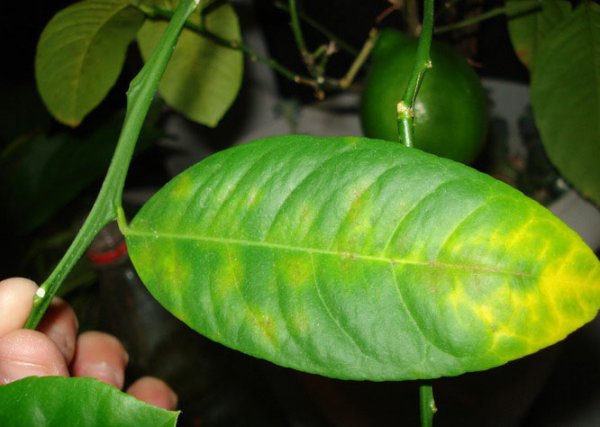

Where can you buy citrus?
Before purchasing a plant, many are wondering where it is best to buy it. If you choose a large store with a large variety of flowers and other plants as a place of purchase, then you should be careful about your choice. Specialists of foreign nurseries, from where plants get to large chain stores, grow various varieties using hormonal preparations. Plants grow quickly, as ideal conditions are created for this. If a new batch of goods appears in the store network, then you should observe them for several weeks. If the tree is still healthy, then you can buy it.
If citrus is sold by local amateur gardeners, then it is much easier to care for it, since the plant is adapted to our conditions. Lemon acclimatization will also be much faster.
Why does a tree dry at home? What to do?
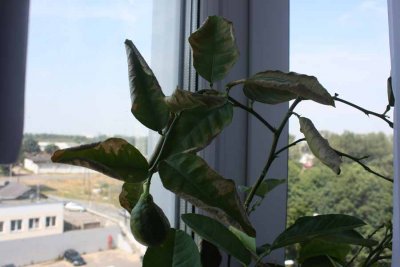

The most common cause of drying is the roots, or rather, their diseases. Improperly selected soil, excess moisture can create a favorable environment for the development of fungus that attacks the roots.
If the plant has been transplanted, then the new pot should be no more than 5 cm in diameter compared to the previous one. Otherwise, the soil will sour. And this again leads to decay of the roots. You can find the rules and recommendations for transplanting a lemon tree at home here, and from this article you will learn how to properly prepare the soil.
Leaves can dry out and in the presence of pests on the trunk and roots.
Too moving the pot frequently with a plant to new places can have a detrimental effect on its growth and vitality. Lemon simply begins to experience constant stress.
Dried up: how to revive?
If the reason for drying is a lack of watering and drying out of the soil, then the plant should be immediately pour over and cover with a plastic bag, providing him with greenhouse conditions.
You can also help lemon with a special fertilizer for the care of citrus fruits. Its introduction will give the plant additional impetus and strength.
Root rotting is caused by fungi, which can be destroyed by fungicides. After that, cut off the damaged parts of the root and sprinkle with crushed coal.
Causes of leaf fall
For citrus fruits, it is important to be in the same place. If the situation in the house changes, then the citrus bush reacts sharply to this. Leaves begin to fall off and twigs begin to dry out. Lemon acclimatization manifests itself in the form of a strong slowdown in the work of the root system, in this regard, less water is supplied to the tree than before. At the same time, evaporation from the leaf surface occurs at the same rate. This leads to the fact that gas exchange and thermoregulation are disrupted, as a result of which the foliage begins to fall off. The fruits receive the lion's share of all substances extracted by the roots. In addition, resources are used for flowering, fruit formation and the growth of new branches.
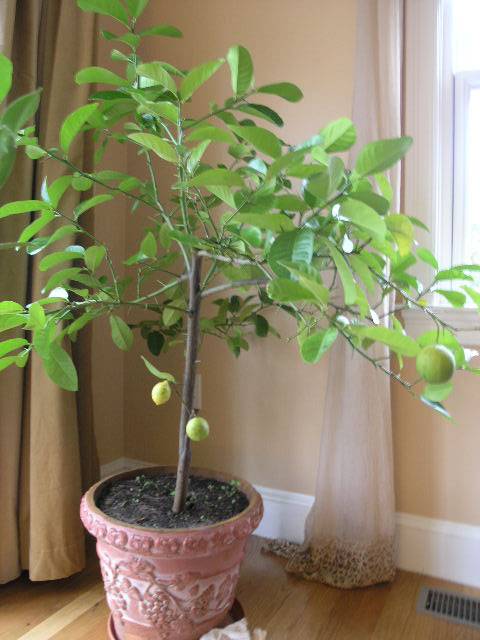

In order for a homemade lemon to feel good in an apartment after purchase, it is imperative to follow the rules of caring for it.
Sometimes you can encounter a phenomenon when even the healthiest-looking leaves fall in large numbers. This usually happens if the plant has not been watered for a long time, and then the citrus was watered. Even a small amount of moisture after prolonged drying can lead to loss of foliage. Homemade lemon resuscitation necessary if you water the citrus heavily, and then put it in a place blown by the winds. As a result, the plant is exposed to strong cooling.
Citrus pests at home
Lemon is the plant that, unfortunately, often attacked by various parasites, such as:
- Shield.
- Spider mite.
- Mealy blackberry.
- Nematode.
- Aphid.
- Garden slug.
Scabbard: how to get rid of it?
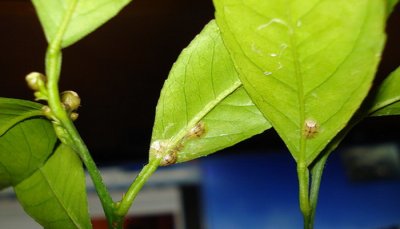

Scabbard is the most common tree pest. The first sign of its presence is a sticky coating on the lemon leaves. On the leaves and branches, bulges of about 4 mm appear, almost imperceptible to the eye. Coated with a dense wax shell, they become immune to chemicals.
You can fight sticky leaves insecticides... During watering, the poison from the leaves is washed off into the soil, absorbed by the roots and the plant becomes poisonous.
You can also fight the scabbard using folk methods. They are very effective, but more troublesome.
Washing leaves with soapy water several times a day until the pest disappears completely. Mix green soap (5g) with anabazine sulfate (2g) and dissolve in warm water. Rinsing is performed once a week, followed by rinsing off the solution with water every other day.
Spraying with a solution of soap and kerosene... To do this, 5 g of soap and 10 g of kerosene are dissolved in a liter of warm water and the plant is sprayed twice a week. You can clearly see this method in action in the video below:
Tick: treatment
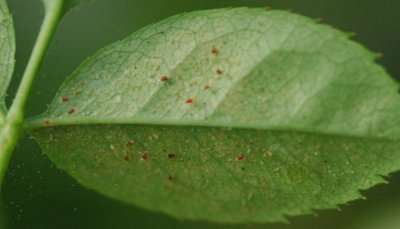

Spider mites are another common parasite on lemon. There are yellow, red, white, transparent types of spider mites.
It can be found on the stem and the underside of the leaves, the sap of which it feeds on. In the process, the leaves begin to turn yellow and dry for no apparent reason.
It is not easy to spot the pest, considering its size is 1–2 mm. But the cobweb on the underside of the leaf is clearly visible, as are the yellow dots in the places of its attachment.
Another tree sprayed with sulfur, insecticides, rub the leaves with alcohol... But the most effective and harmless way is ultraviolet. Two minutes warming up under an ultraviolet lamp has a detrimental effect on the tick... In addition, this method helps to heal and strengthen the plant.
In this article, we found out such questions as: why does a lemon lose its leaves and what to do while doing this, what to do if the lemon tree is withered.
The main thing is to properly care for the lemon, as well as to identify and take action in time for various diseases and the presence of parasites. Then the lemon tree will delight the eye with green foliage and juicy fragrant fruits for a long time.
Lemon Rescue Techniques
If the indoor lemon has dried up, you can try to reanimate it. There are several ways to revive a plant. But you need to be prepared for the fact that these measures may not always help.
We fertilize with special fertilizers for citrus fruits
The soil is regularly fertilized with minerals. Without this, it is impossible to grow a healthy and strong tree. The plant loves frequent, but not plentiful feeding. From the first days of March until the end of autumn, fertilizers are applied once every two weeks. From winter to spring, once a month.
Plants are most in need of nitrogen, phosphorus and potassium. Nitrogen is added twice as much as phosphorus and potassium. Citrus also needs sulfur, copper, zinc and magnesium.
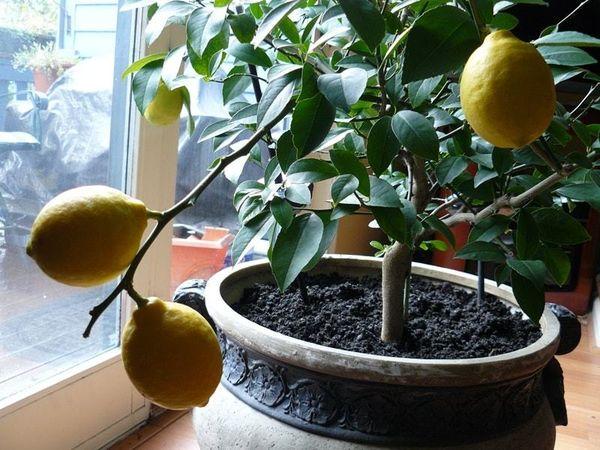

Top dressing schedule:
- In March, once every 10 days, they are watered with slurry and superphosphate.
- In April, superphosphate, potassium sulfate and complex mineral dressings are added.
- In May, urea, superphosphate, can be fed with complex fertilizers.
- In June, urea and superphosphate are added.
- In July, chicken droppings, boric acid and slurry.
- In August, potassium permanganate and complex mineral fertilizers.
- From September to February, once a month, the soil is watered with complex mineral fertilizers.
When introducing top dressing into the soil, it is important to focus on the appearance of the tree. An excess of fertilizer is just as harmful as a lack of it.
We organize competent care
In order for the tree to grow healthy, they organize proper care for it. Lemon needs to immediately choose a place where he will be constantly. Often the pots cannot be rearranged. It is recommended to keep the plant away from heating appliances.
The pots are placed on the sunny or west side. Lemon needs a lot of sunlight. In winter, you will have to install additional lighting.
It is best for the plant if the temperature in the room is the same. Small fluctuations in air temperature by 3-5 degrees are permissible.
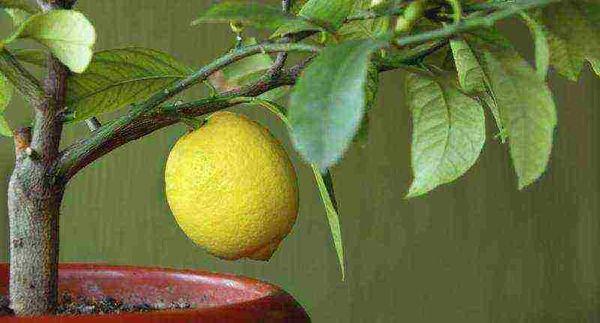

Lemons love moisture. If it's too hot, the foliage is sprayed twice a day. Naturally, regular feeding is important for the plant. Without this, the tree will hurt and grow poorly.
See also
How to grow and care for lime trees at home
To read
Transplanting and rearranging the plant pot
Citrus is transplanted at the end of February, when it is in the resting phase, or in the summer, when the second growth wave is taking place.
How to transplant citrus:
- Drainage is poured at the bottom of the pot, after which a layer of river sand is poured.
- Then the soil is poured.
- The plant is transplanted together with the soil in which it grew earlier.
- Then they cover it with soil and water it abundantly.
The root system is examined before planting the citrus in a new pot. If there are rotten or damaged roots, they are cut off. The rhizome itself is dusted with growth stimulants (for example, "Kornevin").
We establish the watering regime
Citruses love moist, but not waterlogged soil. Frequent and abundant watering will only harm. Sprinkling lemons with tap water is undesirable. It contains chlorine and mineral salts that negatively affect plants. It is best to use filtered or commercial water.
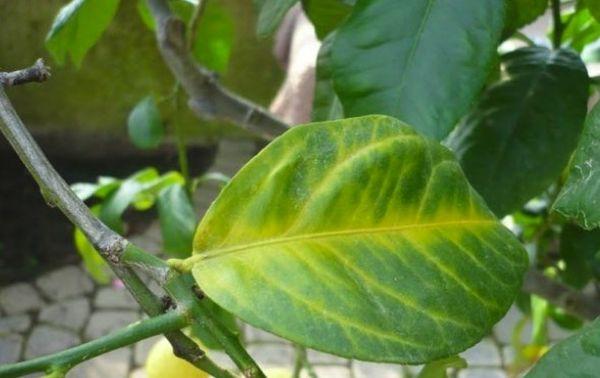

It is not recommended to irrigate the soil with cold water. For irrigation, use warm water or room temperature.
There is no single answer to the question of the frequency of watering citrus. It depends on the size of the tree, humidity and temperature in the house. Citruses are watered in two stages.For the first time, irrigate the topsoil with a small amount of water. After 15-20 minutes, pour out enough water so that it is enough to moisten the entire soil. Water is poured in a thin stream. Watering is carried out in the morning or evening.
Also, during irrigation, it is useful to spray the foliage with water and wipe it from dust.
Protection and prevention from insects and ailments
The first thing that will help prevent the appearance of diseases and pests is feeding. Another procedure is rinsing the foliage once a month under a shower with warm water.
The key to the health of a lemon is properly organized care. Without this, it is impossible to grow citrus with good immunity.
Preventive measures against diseases and pests:
- Foliage and branches are inspected once a week.
- If the tree has recently been ill or other indoor plants have been ill, they are isolated from everyone else for a while.
- Once a month, foliage and branches are washed with soapy water.
All of these measures will help prevent lemon pests and diseases.
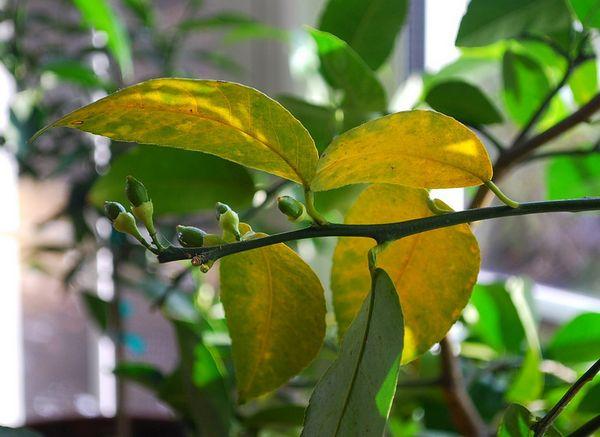

Why does the plant shed its leaves
Citrus fruits familiar to us - lemons, tangerines, oranges - come from the humid subtropics. Their habitual climate is humid, sunny summers and moderately warm winters. Lemons are conditionally deciduous plants, they are able to bloom and bear fruit all year round and only suspend growth in winter. Indoor lemon varieties are "domesticated" more than other citrus fruits, that is, they get used to the microclimate of apartments more easily.
Lemon leaves are its "pantry", a strategic supply of nutrients. Young shoots grow due to the nutrition accumulated by adult leaves. The more foliage a tree has, the more weighty the crop that it will feed. Therefore, our task is to preserve the foliage as much as possible.
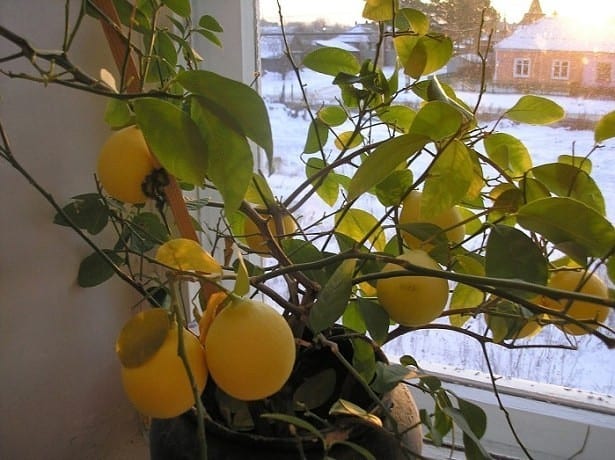

Let's see what happens to lemon indoors. Illumination with the onset of autumn drops sharply, the plant does not have enough light. Cold air flows from the windows. At the same time, radiators drive dry hot air upward. The lemon tree perceives bad conditions as stress, reacting to them with leaf fall. Thus, winter is the most dangerous period in the life of lemon and other citrus fruits.
Why does lemon shed its leaves? Main reasons:
- adaptive stress;
- poor lighting;
- heat and dryness of the air;
- excessive watering;
- insufficient watering;
- temperature difference;
- lack of nutrients;
- diseases and pests.
A little about citrus fruits
Citrus fruits, for the most part, are native to the subtropics, with hot summers and mild winters. The summer growing season for lemon means an abundance of sun and moisture. In autumn, with a natural reduction in daylight hours, the volume of watering and dressing decreases. The dormant period for lemon is expressed by a decrease in average temperatures.
Unfortunately, we do not always manage to provide good wintering conditions for lemon. Why he can shed part of the foliage, or almost completely lose the green mass. It's not so scary if this happened, but in order not to bring our green pet to leaf fall, you need to know why the plant threw off the foliage. So, homemade lemon sheds its leaves - what to do and how to prevent it?
Below are the main reasons:
- Bad light
- Excessive watering
- Insufficient watering
- Soil depletion
- Dryness and heat at home
- Coldness in the room where the tree hibernates
Lack of light
Lack of light threatens lemon in the winter season: the plant needs 12 hours of daylight. In the dark, in the process of respiration, the leaves quickly consume the nutrients accumulated during the day. A starving tree seeks to get rid of "extra" leaves - they fall off green.
Techniques to help fill the lack of lighting:
- rearrange the lemon pot to the brightest place, preferably to the south window;
- surround the tree with mirrored reflectors, foil screens;
- organize illumination with phyto-lamps or fluorescent lamps;
- lowering the temperature in the room or moving the lemon to a cool place - this measure will reduce respiratory activity.
Lighting
The natural habitat for lemon is the hot tropics, so genetically the plant needs good long-term lighting. But this does not mean that the tree should be exposed to direct sunlight. Otherwise, the sheets may be burned. If there is not enough light, yellow spots will appear on the lemon leaves.
If the leaves of your plant are covered with yellow or brown spots, this may indicate that the tree has received a sunburn. Excessive exposure of the lemon to direct sunlight can cause the leaf tips of the tree to darken and curl. This means that your tree has received a sunburn.
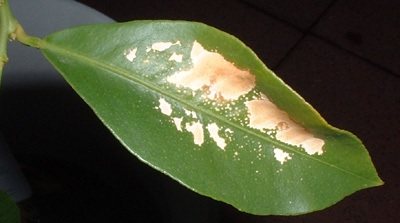

Lemon leaf sunburn
But burns on the leaves do not affect the entire plant as a whole, they are received by the leaves only on the side of the tree that was facing the sun.If you notice that your lemon has been burned by the sun, you need to remove it from direct sunlight, over time the plant itself will recover. But recovery will not happen quickly, so it is best to avoid placing the plant in direct sunlight.
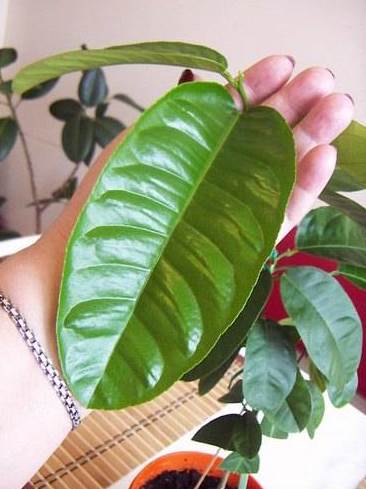

Hypertrophied large leaves are a sign of excess light for a lemon
The signs of a lack of illumination are clearly visible on the leaves: they become pale green, their size decreases. In the event of a lack of light, the lemon can even shed some of the leaves. It is especially important to monitor the light regime in the autumn-winter period, when the light becomes less, and the plant may experience its deficit.
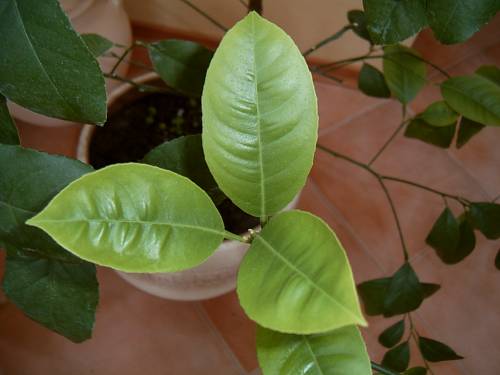

Lack of light in lemon - leaves become pale
The most optimal growing area is well-lit, with a fairly bright and diffused light, but not in direct sunlight. The plant is best placed on the west or east side of the house, it is also possible on the south.
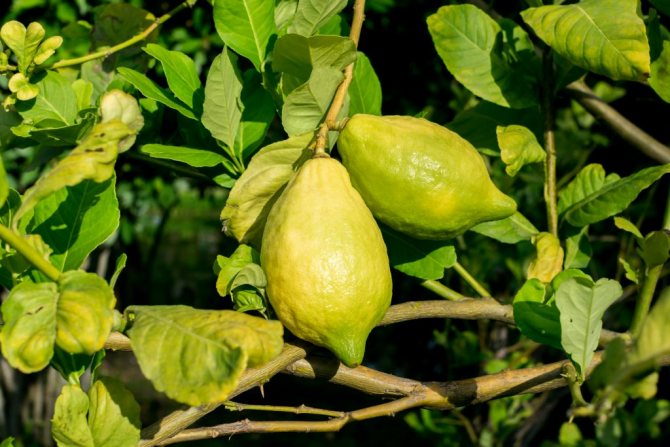

Evolutionarily, lemon is adapted to bright light, withstands direct sunlight, but at home the situation is somewhat different. The tree can get sunburn as a result of overheating: in indoor conditions there is no wind that cools plants in nature. The burn appears as small yellow and dry spots on the leaf blades. To avoid such a problem, it is better not to put the lemon near closed windows in places where the direct rays of the midday sun fall in summer.
The indoor lemon perceives the lack of lighting as a signal of a transition to a state of dormancy or a change in the climatic season and reduces the crown. For this plant, the optimal light period is 12 hours a day, so in winter additional lighting is useful for it.
Elevated temperature
Subtropical plants need to simulate seasonal dormancy - a decrease in winter temperatures. The heat in the room in winter causes the same problems as the lack of lighting: the plant simply starves and sheds the leaf. The temperature range from 10 to 15 degrees can be considered optimal for the winter content of lemon.
Ways to solve the problem:
- rearrange the lemon in a cool (but not cold) place;
- shield the tree from the heating battery - fence it off with a film, plexiglass, or cover the battery with a cloth;
- increase air humidity, spray the plant regularly;
- if it is impossible to lower the air temperature, you need to increase the lighting intensity using the backlight.
In summer, in the heat, lemon leaves can be affected by the rays of the direct sun. If possible, take the plant out into the fresh air - in the loggia, veranda, in the garden under the protection of trees.
What to do if a lemon suddenly flew
If flying is associated with poor or improper care, then it can be eliminated by changing the conditions of the plant.
If the cause is associated with infection of the plant with dangerous fungal infections or parasites, then specialized medications must be used.
And you can get rid of pests without using expensive insecticides, because ordinary soap has a detrimental effect on them. To spray the plant, you need to make a strong soapy solution and spray it on the places where the parasites accumulate. After the first treatment, most of the parasites will disappear and the plant will feel better.
Reduced temperature
Lemons can be kept in an unheated room in winter, but the temperature in it should not drop to zero: lemon does not tolerate frost well. Cold drafts also negatively affect the condition of the tree. Hypothermia of the root system is especially dangerous for citrus.
The tree sometimes sheds its leaves if it is suddenly moved from a warm room to a cold one. It is better to accustom the plant to coolness in advance, without waiting for severe cold weather, in order to avoid temperature stress.
How to revive a lemon
A lemon that has lost its leaves can still be saved. To reanimate a plant, it is necessary to determine the causes of leaf fall and take action based on the situation.
Simple and effective citrus rescue steps are shown in the following video.
Have you tried growing homemade lemon yet? Be sure to do it! The lemon tree heals the air in the room with phytoncides of leaves, fills with the aroma of flowers. And your own lemon for tea is much tastier and more aromatic than the store one!
Improper watering
Citrus roots have a characteristic feature: they are devoid of suction root hairs. The assimilation of moisture and nutrients occurs due to mycorrhiza. Therefore, proper watering for lemon is of paramount importance. The plant does not tolerate both overdrying of the soil and waterlogging.
Excessive watering
Important: Excessive watering at low temperatures is dangerous for the lemon, as it can provoke root rot. In winter, the frequency of watering is reduced, without bringing the soil to dryness.
Sign of excessive moisture: the leaves turn yellow at the base and fall off. This indicates decay of the roots - they suffocate from soil compaction and lack of oxygen.
- remove the plant from the pot, examine the roots;
- cut off the darkened rotten roots;
- sprinkle with Kornevin or charcoal powder;
- plant a lemon in fresh, loose soil;
- water with care.
If the root system has undergone heavy pruning, the lemon should be transplanted into a smaller pot than the previous one.
Overdrying
On the other hand, in hot weather, the lemon must be watered abundantly. Swirling and drooping leaves indicate dry roots.
What if you dry out the soil in a pot, the lemon has wilted, how to revive it? In this case, you cannot rush and fill the plant. Here is a sequence of actions to resuscitate a lemon:
- take warm, settled water and pour a little so that the water is absorbed;
- after half an hour or an hour, add another portion of water to the pot;
- continue spilling the soil in small portions until it is saturated with water;
- spray the crown (preferably with Epin's solution) and cover the tree with a plastic bag.
Lemon is critical not only to the quantity, but also to the quality of water. Watering with hard water leads to soil salinization and damage to the root system. It is advisable to use filtered tap water, you can take rain and thawed water.
What should be done before buying?
If citrus is bought in a large flower shop, then you should carefully examine the bush for the presence of pests. On the plants in the store, you can encounter a scabbard, spider mite and other enemies. If you buy a diseased bush, then soon pests can infect all plants in your house.
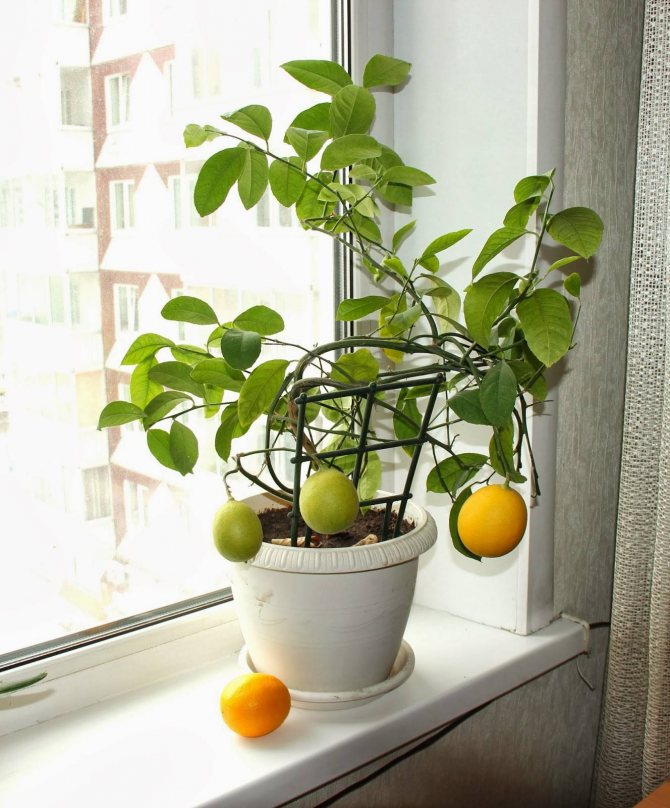

After moving the plant from the store to your home, it is better to remove the already planted fruits so that it is easier for the plant to acclimatize.
For acquisition, completely healthy specimens are chosen, on which there is a large amount of foliage. If there are no fruits on the bushes, then this is not so important. Soon fruits will appear on healthy citrus fruits, delighting you with their beauty and originality.
Sometimes in stores there is a big discount on plants that are susceptible to various diseases. You should not buy them if you have no experience in treating flower ailments.
Soil depletion
Due to the nature of the root system, lemon is very sensitive to the quality of the soil. The soil for lemon must meet the requirements:
- looseness, air and moisture permeability;
- neutral acidity;
- increased content of organic nutrients.
Important: The young plant is transplanted into fresh soil annually. Large trees in tubs are transplanted every 2-3 years, and the topsoil is replaced annually.
Lemon fertilization program:
- in the spring - the predominance of nitrogen fertilizers to stimulate growth;
- in summer - complex fertilizers, the dose of phosphorus and potassium increases;
- in the fall - nitrogen fertilizers are excluded or reduced to a minimum.
Top dressing for a fruiting lemon is a must! Watering with nutrient solutions is carried out at least once a month.
Preventive actions
So that part of the crown does not fall off, and the lemon does not dry out, blooms intensively and bears fruit, it is recommended to follow a number of preventive measures:
- The plant is fed with organics and nitrogen in the spring. In the summer, phosphorus and organic fertilizers are applied. In the fall, fertilize with potassium-based preparations. Complex mineral remedies are given every month.
- Every 3 years, the lemon is transplanted into a larger planter, the soil is renewed.
- Cut off dry branches without leaves, form a crown.
- In order to prevent the spread of the fungus, they maintain the temperature regime, ventilate the room.
- They create the conditions necessary for growth, adhere to agricultural techniques.
- The plant is periodically inspected for pests.
- So that the leaves do not fall off, in the fall and spring, the tree is treated with Bordeaux liquid.
Pests and diseases
Lemons in the house can "pick up" unwanted guests - spider mites, scale insects, aphids. Parasites appear along with infected seedlings, from neighboring indoor flowers and even bouquets. Severe pest infestation causes yellowing and leaf fall.
The most dangerous is the spider mite. This is such a small parasite that its reproduction is often imperceptible - until the leaves are covered with yellowish dots and a coating of cobwebs. The pest settles on the underside of the leaf, sucking the juice from the tissues. Tick control includes activities:
- warm shower;
- spraying the crown of the plant (the mite does not like moisture);
- three times treatment with Fitoverm at weekly intervals.
Infection of lemons with scabbard and pseudo-scabbard is common. Adults are motionlessly attached to leaves and stems, overgrowing with a brownish shell. Their larvae - tramps quickly spread throughout the plant. The pest is destroyed by mechanical and chemical methods.
In the fight against aphids, folk remedies also help - tobacco-soap broth, garlic infusion.
Among diseases, lemon most often affects gommosis, or gum therapy. The disease can be caused by improper care - deepening of the root collar, excessive watering and soil compaction, fungal infections.
Diseases of indoor lemon
Leaf shedding can also be the result of infection of the plant with fungal diseases or parasites. Among the parasitic reasons why lemon leaves turn yellow, most often aphids and spider mites. Among the diseases is gommosis.
A spider mite most often develops in dry, hot air, characteristic cobwebs appear at the bases of the leaves, the leaves themselves turn yellow, curl, dry out. Fitoverm is well suited against a tick. It is possible, if the tree is small, to dip its green part in hot water, above 60 ° C.
A sign of aphid infestation is deformation, yellowing of leaves, drying out of whole branches. When there are a lot of aphids, it is difficult not to notice its colony, they concentrate on the back of the leaf. If there are few insects, then manually remove all the affected areas, if there are many - use Tanrek products and the like.
It happens that all of a sudden the lemon dropped the leaves. What to do in this case? Check for homoz - gum outflow on the bark. Hommosis often results from other diseases that weaken the plant. It is with them that you need to fight. Moreover, most often, exclusively with drugs, folk methods are not very effective here. It is not always easy to determine what disease we have in front of us, so it is best to use complex drugs, such as Antracol, Quadris and others.
If you are the lucky owner of a lemon tree, you have probably noticed that at times the lemon sheds its leaves. This is how many homemade citruses behave when exposed to unfavorable conditions. We will tell you why lemon leaves fall, what to do in this case, and how to heal this useful houseplant.
Why lemon does not bear fruit
With insufficient feeding, the ovary, which has developed to the size of a walnut, crumbles. Sometimes, with scant feeding, the ovary ripens, but the fruits remain small.
The lack of fruiting can be attributed to poor pollination. In this case, you need to dust the flowers with a cotton swab, transferring pollen from one flower to another.
To get a rich harvest of lemons, you need to create all the necessary conditions for the tree and ensure proper care. So, for example, in the absence of a state of dormancy, the development of a plant is disrupted, which directly affects its fruiting.
Blackening and reshaping of lemon leaves
Changes in the shape or color of the leaf plate cause several reasons. First of all, it is worth checking the presence of wartiness in the plant, which appears due to the increased temperature and humidity around the lemon. Treatment in this case is reduced to the elimination of damaged areas and their treatment with Bordeaux liquid in March, after the lemon has flowered and in mid-July.
Reduced phosphorus content in citrus soil leads to darkening of the foliage. Corrected by applying the appropriate mineral fertilizers. Corrugated leaves indicate a lack of potassium. The plant recovers after fertilizing and watering with potash water. Mosaic light strokes on the leaf plates signal the leaf mosaic. The tree stops growing and releases deformed leaves. It will not be possible to cure the disease, but special fertilizers will reduce the negative manifestations.
Late blight is manifested by a light bloom below the leaves and darkened spots on the plates. Lemon can be healed by removing damaged areas and then treating them with copper sulfate.
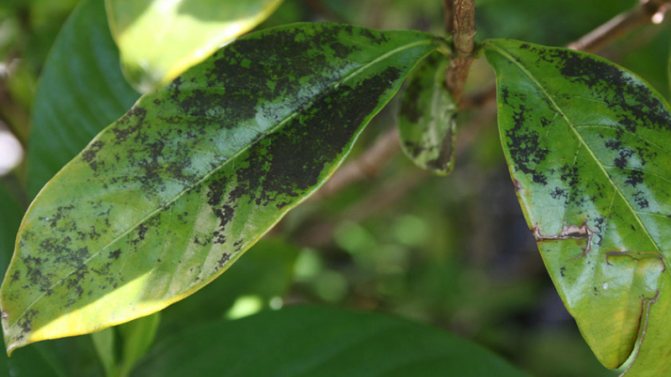

The role of vitamins, micro- and macroelements in the life of citrus fruits
With the timely application of fertilizers containing a complex of the above elements, you will be able to figure out why the lemon suffered before, and understand why the leaves of the lemon fall off.
Nitrogen keeps the color of the leaves of plants in their usual green state, which means that the plant is healthy. Calcium contributes to the normal development of the root system and the absence of pathological processes.
Without the presence of phosphorus, the construction of plant cells would be impossible, the fruits would not be of different quality, would not be so sweet, fortified, would not contain the entire spectrum of useful microelements.
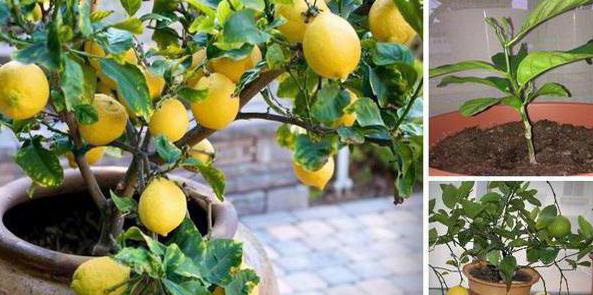

Thanks to potassium, nitrogen is absorbed faster, thereby accelerating the ripening of shoots covered with a lignified crust, and helps to increase the plant's immunity to citrus diseases.
It is important! Taste qualities with complex systematic fertilization in citrus fruits are significantly increased.
Reason 2. Excess watering
Excessive frequent watering usually leads to the death of the plant. In a constantly moist soil, the optimal development of microbiological processes in the soil does not occur, the roots suffocate and die. Water for irrigation must be defended, better filtered, and even better, freeze and thaw. Citrus fruits do not tolerate chlorine at all, lime water causes chlorosis of the leaves. The water should be slightly lukewarm. If you've poured your lemon, remove it from the pot, blot it with an earthen ball with paper towels, and air dry a little. If there are brown soft roots, remove them with a sharp knife or scissors. Places of cuts can be sprinkled with ash and "Kornevin". Then plant it back in a clean pot with good new drainage, in this case it is better to take lightweight earth - peat + perlite + just a little bit of ready-made soil for citrus fruits. Spray the crown with "Epin".
What to do with citrus after purchase so that it does not fly around
After purchase, the plant is freed from the packaging that fixes the roots. For an annual plant, take a container with a volume of 0.5-1 liters, for a two-year-old you can take 2 liters. A drainage layer is laid out at the bottom of the pot, the soil is covered and the roots of the tree are deepened, leaving the neck at the level of the soil. The plant is abundantly moistened and a layer of humus is formed on top of the soil. To reduce the level of stress, the lemon crown is covered with polyethylene or a glass cover. After a couple of days, spraying with "Epin" or "Zircon" is carried out.
Temperature regime
Your lemon leaves began to curl at the ends and then turn yellow? Probably the reason is insufficient watering of the plant. It is best not to let the lemon soil dry out, because this can lead to the drying out and death of the plant. The soil in the pot should always be slightly damp. But if the soil does dry out, it must be moistened gradually, in small portions of water at intervals of several hours. Watering the lemon sharply after a "drought" can negatively affect the plant, and it will shed its foliage.
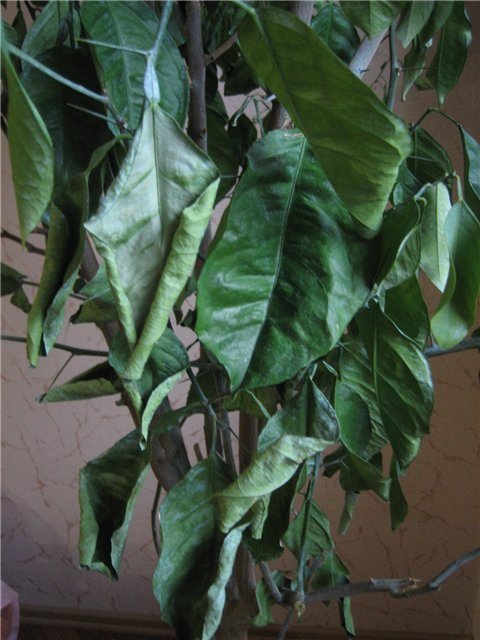

This happens if you do not water the lemon for a long time and dry the soil
Too much watering will also not have the best effect on the condition of the plant. With a large accumulation of moisture in the soil, the leaves turn yellow at their base, and not at the tips. The flooding of the plant adversely affects the state of the root system, it begins to rot, and because of this, the plant begins to ache and wither.
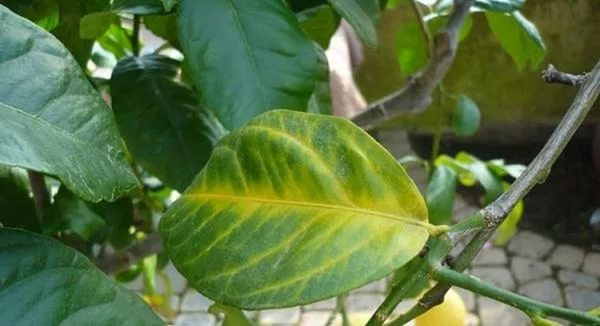

With excessive watering, the lemon leaf begins to turn yellow near the base.
To eliminate the effects of over-watering, the plant should not be watered for several days to allow the potting soil to dry out. If there is too much moisture, it is imperative to transplant the lemon into a new pot, after drying the roots a little before planting. It is also important not to forget about drainage.
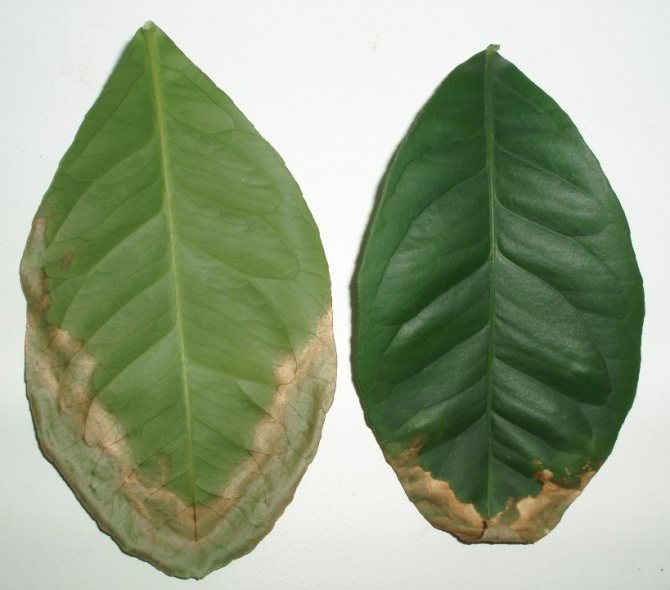

Signs of a regular bay in the lemon - the edges of the leaves darken, gradually turn brown, rotting of the roots is possible.
Water the lemon as the potted soil dries. The frequency of watering is determined by many factors: the size of the pot and plant, the temperature and humidity of the air, and others. In the summer, the lemon needs to be watered more often than in the winter: if in winter a couple of times a week is enough for the plant, then in the summer the number of waterings should be increased and the lemon should be watered every day or a little less often.
Read more: Grape leaves are light green, pale: causes of the disease
Lack of water is critical for indoor lemon, especially for a large tree with a strong crown. Moisture is constantly evaporating from the leaves. If the roots feel a lack of water, the plant sheds part of the crown, limiting the evaporation surface. Before falling off, the leaves turn yellow, most often with petioles, but green leaves may also fall off.
To avoid this situation, it is necessary to water the room lemon abundantly daily. If the air in the room is dry, it is recommended to regularly spray the leaves from a spray bottle, you can place an open container of water next to the pot.If the plant is close to heating devices, then the flow of dry hot air increases the evaporation of moisture from the leaves, and the lemon seeks to protect itself from this.
Not only lack of water, but also its excess leads to yellowing of leaves. With constant overflows, the roots sour, oxygen access to them is disrupted, and decay can occur. In this case, the plant should be transplanted into a new pot, changing the soil and treating the roots with a solution of potassium permanganate. Young plants are especially sensitive to overflow.
For homemade lemon, it is important to follow the rules and watering regime. We need a middle ground, because both underfilling and overflowing are dangerous for the root system of a houseplant. Excessive moisture leads to waterlogging of the soil. Heavy soil interferes with air circulation, resulting in root rot.
Choose the optimal watering regime that will keep the soil slightly moist. It is better to water several times in small portions. As a safety net, you can put a small amount of drainage on the bottom of the pot: after all, if the top layer of soil is dry, this does not mean that there is not enough moisture inside.
Another reason why lemon leaves turn yellow may be a violation of the temperature regime. The fruit does not like temperature fluctuations, drafts. Yellowed leaves will tell the owner that the plant is under stress. The temperature of about 20 degrees will be optimal for the development and well-being of the tree. However, the plant can withstand a temperature range from 14 to 25 degrees, the main thing is stable performance.
Massive and abrupt fall of green leaves
In addition to the wrong feeding or watering regime, the disease gommosis can provoke a sharp and massive fall of citrus leaves. The main symptom is the appearance of a light brown sticky liquid in areas of the dying bark.
Citrus can be saved with the help of various fertilizers and dressings, including mineral formulations. The main thing is that the plant receives boron, potassium, phosphorus and iron.
Top dressing should be moderate. Abundant fertilization leads to a sharp drop of all the leaves of the lemon.
Watering the plant correctly:
- water for irrigation should be warm;
- it is necessary to water often, but in small portions;
- overdrying the soil is unacceptable;
- monitor the patency of the holes in the bottom of the pot;
- the volume of the drainage fill should be up to a third of the total soil.
If the process of decay of lemon roots due to an excess of moisture is started, the plant should be transplanted immediately. After cutting off all damaged roots, it is necessary to treat healthy areas with a weak solution of potassium permanganate. The tree should be planted after the rhizome has completely dried.
Immediately after transplanting the citrus into a looser pot, the plant will begin to develop roots, and only after a certain time will new leaves appear.
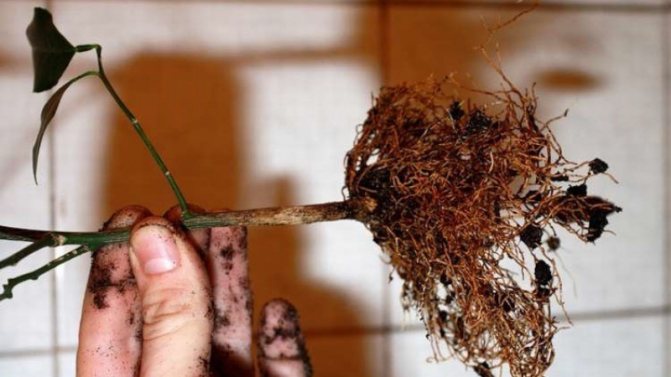

The plant has dried leaves at the edges and tips: what is it and how does it look?
The leaves begin to dry out gradually from the tips to the stem., while they can be folded. First, the leaf turns yellow from the end, its surface becomes sluggish and soft, later dries up and becomes completely brown. This process occurs as often as yellowing or complete loss of leaves. In most cases, one problem is accompanied by another or entails its consequences.
You can find out more about the causes of yellowing of lemon leaves in our article.
Useful video
Personal experience in dealing with various pests of lemon:
If you find an error, please select a piece of text and press Ctrl + Enter.
Do not throw it away under any circumstances.
I did such a stupid thing with one grafted lemon in the first year of his stay with me, and left the second pot (there were leaves left).
So left for 25 years, it gives me harvests, but sheds leaves every year.
I read that he lacks mineral fertilizers. Last year I fed him with a special fertilizer for citrus fruits and he did not shed the leaves.It bloomed very violently in spring.
There was no free branch from flowers. And they smell! Stunned!
Now there are 3 lemons hanging. They mature for a long time. They will ripen only by spring.
Old but productive. Last year there were 5 lemons.
Feed and he will answer you with gratitude. Good luck!
Lemon is an evergreen plant. But sometimes, under unfavorable conditions, he (lemon) sheds leaves for the purpose of protection. Lemon developed in a monsoon climate and is familiar with periods of droughts (especially when El Niño intensifies, when warm water moves to South America, and in Asia it becomes drier, and this does not happen every year, as a result of which when the monsoon rains return regularly, it does not need to dump leaves). This protection is due to the fact that when there is not enough water, he is forced to shed the leaves to reduce evaporation and protect the plant as a whole. Watering is enough and new leaves will grow again. Next, you should cut off the branches damaged by drought, at this moment you can cut a little more in order to form a more beautiful crown (well, or more convenient for home maintenance).
The same process can occur when a plant is flooded. If the roots rot (with an excess of water, they do not receive the required amount of oxygen and die), the leaves will also receive less water. And the process of shedding leaves is the same as in drought. Protecting the plant from dehydration. In this case, you should change the soil, remove rotten roots, and cut off the branches. In more ventilated soil (with sufficient water balance) and a heavily pruned lemon, after a few months the lemon will heal and grow new branches (if the roots do not continue to rot).
The third point is a lemon plant of the lower tier (more large plants shade it, on plantations in more northern (southern from the equator) regions this is not required - it is colder and the water evaporates less), in bright sunlight, the leaves lose water too quickly, if the roots cannot to compensate for losses - the leaves will think that the drought has begun and to save the plant as a whole they will be thrown off.
Know the native climate of the plant and you will always know how to care for it, induce flowering and avoid disease.
Home-grown lemons require quality care. With any errors in the content, the culture does not bloom, get sick and does not bear fruit. Often the lemon dries up and its leaves fall off. To keep a houseplant alive, it is important to identify the factors that precede such problems and take appropriate action.
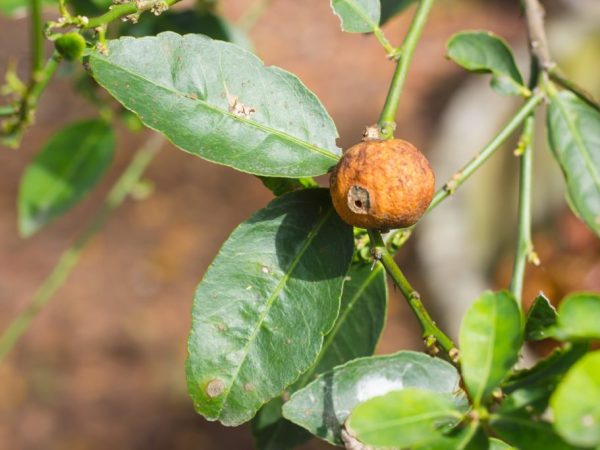

Why does lemon dry
Lack and excess of fertilizers
Citrus fruits are quite demanding on the presence of nutrients and trace elements in the soil. If small yellow spots appear on the leaves between the veins, then it's time to feed the lemon, otherwise the plant will die. Specialized citrus fertilizers are ideal for feeding. Although you can balance your diet yourself.
But keep in mind that in addition to phosphorus and nitrogen, your pet will also need preparations with magnesium, iron, zinc, potassium, calcium, sulfur. So if you are not a fan of gardening, then it is better to buy a ready-made fertilizer. An overdose of fertilizers can provoke the simultaneous fall of all leaves at once. Do not forget, if you want to calmly feast on the fruits without risk to health, adhere to measures in the use of dressings.
Podura (springtails, fork-tails)
The appearance of these millimeter wingless flower pests usually indicates excessive moisture in indoor plants. They live in the soil, eating the small roots of flowers. If there are many of them, then you can see insect colonies on the bottom hole of the pot or on the ground. They look like whitish particles. They do not cause much harm to plants; rather, they even bring benefits to attentive flower growers, signaling with their appearance that it is necessary to reduce watering of the plants in order to avoid decay of the roots.The soil in places of accumulation of insects is replaced, sprinkled with sand or shredded tobacco.
Root worm
White aphid that settles on the roots and the lower part of the stems in the form of a whitish bloom. At the same time, the flowers do not grow, the leaves turn pale, fade, wrinkle. Weakened plants often suffer from fungal diseases. Most often, these parasites attack wintering plants with minimal watering.
In spring and autumn, prophylactically, it is necessary to water them three times with insecticides with a gap of a couple of weeks. In affected plants, the damaged fragments (and partially the crown) are pruned, washing the roots for ten minutes with an insecticide. Then they are transplanted into a new land.
Other more understandable reasons for leaf fall include:
- frequent change of tree location
- untimely transplant / transplant with soil replacement instead of transshipment
- type of substrate that does not correspond to the plant species
- very depleted soil
- scarce or excessive feeding / feeding in a dry earthen clod / poisoning
- bad water
Eliminate the unfavorable factor - and your plant will again delight you only with growing, not falling leaves.
Woodworm
These are small "crustaceans" with a gray-brown shell. These insects sometimes reach a size of up to several centimeters. They can be found in pots with loose and nutritious soil, where they move quickly with 8 pairs of legs.
These are the worst enemies of tropical plants, which they damage the delicate roots. In addition, pests compress the soil, which leads to disruption of nutrition and respiration of the roots.
They end up with potted plants that spend the summer in the garden. You can find uninvited guests by piles of dry earthen substrate, constantly pouring out of the pots into the pallet.
The treatment of indoor plants from these pests is reduced to transplanting them into a new earthen mixture with preliminary washing of the roots with warm water. You can also lower such plants for a couple of tens of minutes in a container of warm water. And the insects that surfaced are very easy to collect.
Nematodes
These are 3 groups of white round small worms that live in different parts of the flowers:
Root. The parasites attach to the roots, destroying them, and can live there for many years in anticipation of suitable conditions. Plants wither, do not grow, flowers become smaller, branches are deformed.
Stem. They live at the base of the stem, cause the death of plants due to lack of nutrition.
Leafy. Millimeter earthworms. When they appear on the leaves, greenish, quickly darkening spots are observed. Plant buds do not develop, young shoots, stem tops and buds dry out. These individuals spread with contaminated water.
To prevent the ingress of these almost impossible pests, the soil is disinfected at temperatures above 50 degrees for 10 minutes or by treating it with 10% formalin, washing it off only after a couple of hours. Garden tools and flower containers are also disinfected.
It's hard to get rid of. Weakly affected plants are treated with Dekaris (the tablet dissolves in a liter of liquid) or Heterophos. Laid flowers and the earth from them are destroyed.
Overflow or drying of soil
Even taking into account the fact that the plant is considered subtropical, which means that it loves moisture and high humidity very much, it is still undesirable to flood it with water excessively. Let's say you very often moisten the soil composition of the lemon, spray the tree. In addition, it happens that there are no drainage holes in the pot, which will only worsen the situation.
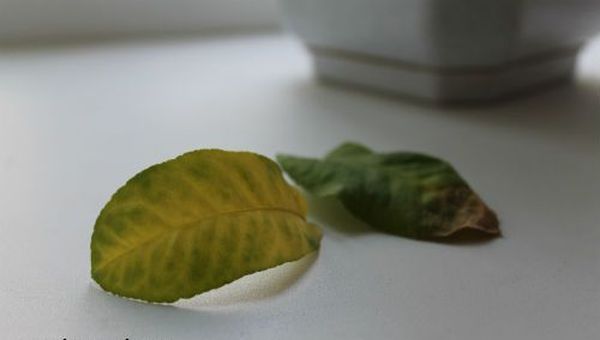

What is the result of the florist who made a mistake? The soil in the flowerpot gradually becomes denser, the pores become clogged. Now in the substrate it is no longer so easy to circulate the air that the rhizome needs. Sooner or later, the house tree in the house simply dries up, since the root system begins to rot due to excess moisture.The indoor lemon drops its leaves, and all because, due to the high density of the soil in the pot, the nutrient components do not enter the rhizome.
But the main thing in caring for a home lemon tree is the golden mean. If excessive watering can destroy a plant in a matter of weeks, a lack of moisture in the ground can also cause a lot of harm. If you don't water your indoor shrub regularly, the soil will gradually dry out. The rhizome again does not absorb all the necessary useful components.
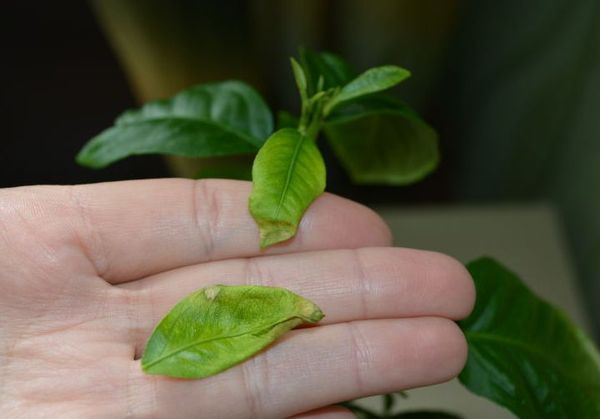

So that the indoor tree does not fold its leaves, it is necessary to work out the features of its watering.
In the periods between wetting the substrate, be sure to control the condition of the soil: as soon as it becomes a little wet, you should re-irrigate the soil. Do not wait until the earthen lump is completely dry. In this case, excessive watering will create a real stressful situation for the indoor shrub. The problem can be solved by watering the ground with small amounts of water about once every 2-3 hours. This will bring the lemon back to life after a water starvation.
Why home lemon does not bloom
Sometimes it happens that citrus does not bloom for a very long time. In this case, the tree can be pushed to bloom by grafting with a cultivated cuttings. After that, flowers will appear in 2-3 years. The reason why home lemon does not bloom may be the lack of a cool wintering (at a temperature of 12-15 ° C), when the plant has flower buds. In a warm room, without a dormant period, citrus may not bloom. In addition, the tree may be deficient in trace minerals.
Lemons grown from seed very rarely bloom and bear fruit. To achieve flowering, it is necessary to graft a branch of a fruiting plant. Flowering will come in 3-4 years.
When planting a lemon, you should be aware that some varieties bloom annually, while others once every 4-5 years.
Air humidity
If the air is dry, then the longer the plant stands under these conditions, the more stress it experiences. The optimum room humidity for keeping lemon should be at least 60%. Excessive humidity in the air can provoke the appearance of mold and fungal diseases.
It is necessary to install a humidifier next to the lemon during the heating season and in the heat. If it is not there, then you can increase the humidity using the following methods:
- Regular spraying and wiping the leaves with a damp cloth. It is necessary to spray the tree at least once every two days, and it is necessary to wipe the leaves with a damp cloth every day.
- You can wrap the pot with a wet towel and plastic. So we restore not only the humidity of the air, but also protect the plant from drafts. There is no need to cover the greenhouse additionally. Once the towel is dry, you can moisten it again.
- Place small containers of water around the plant. By gradually evaporating, the water will saturate the air and create a favorable microclimate for the tree.


The humidifier will solve the problem of dry air

